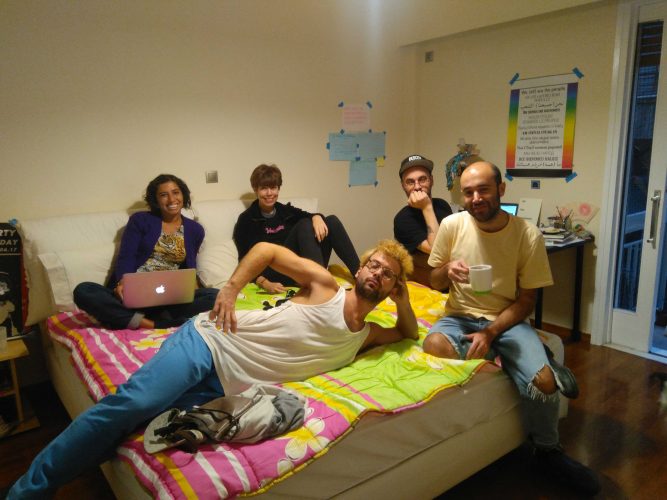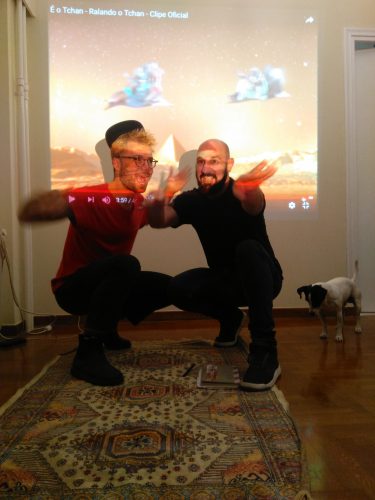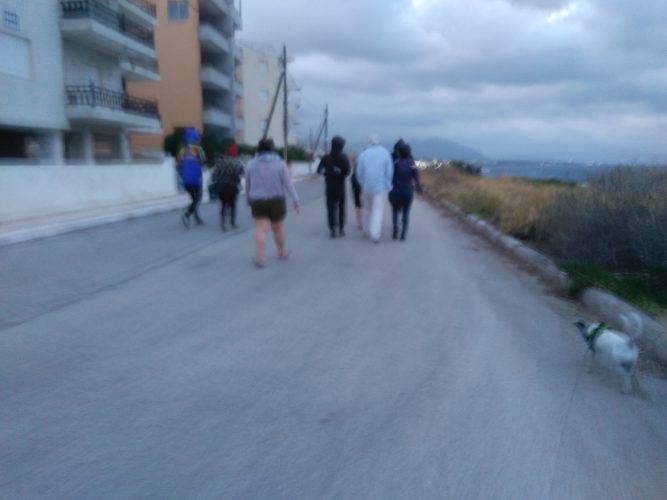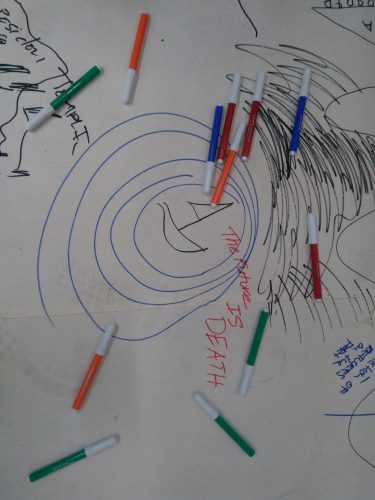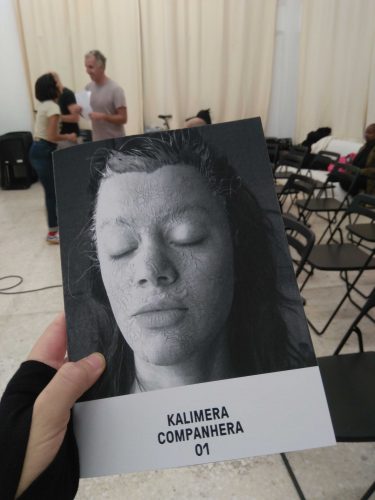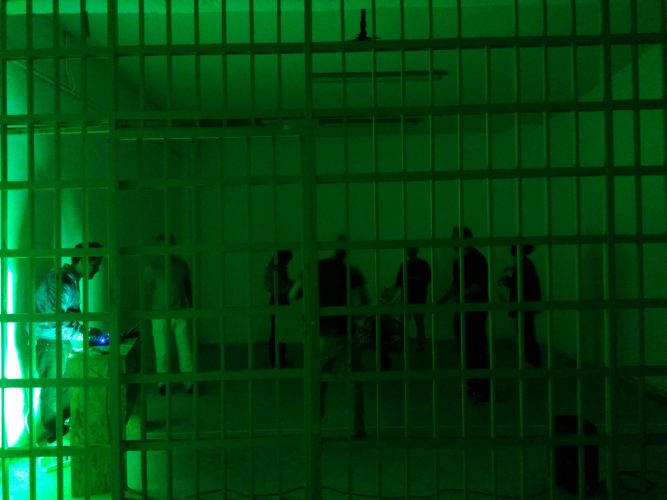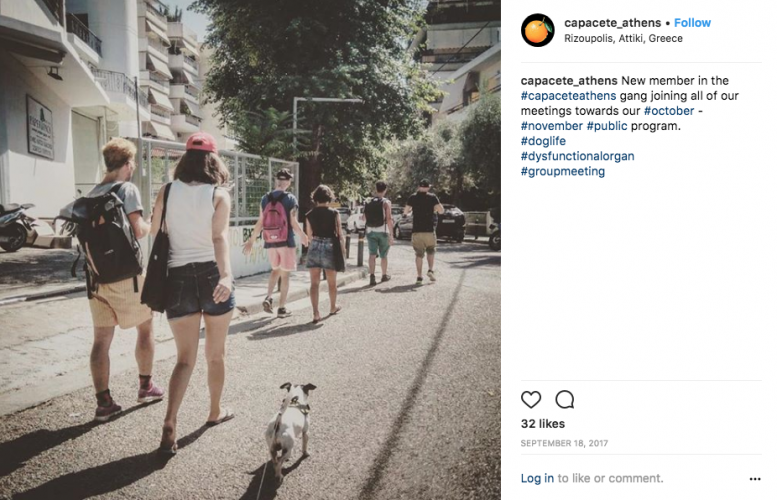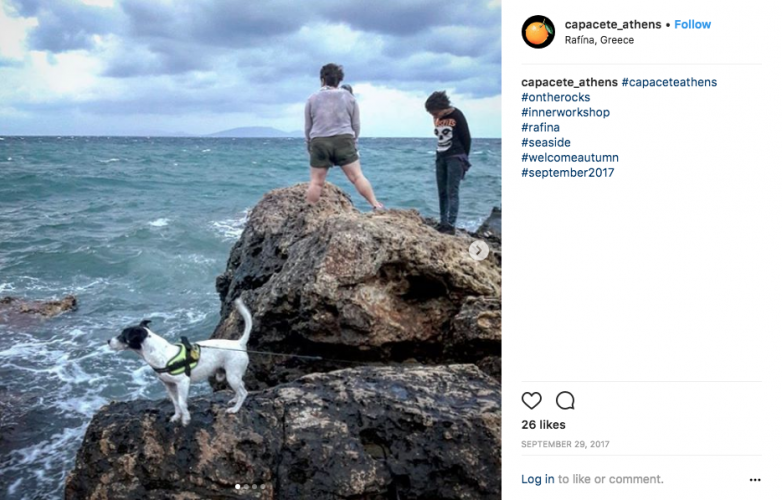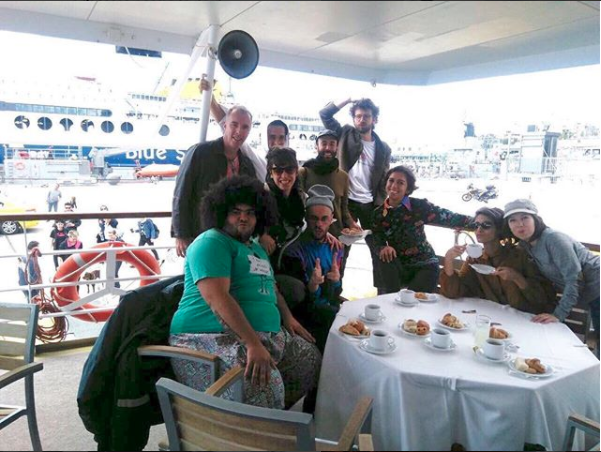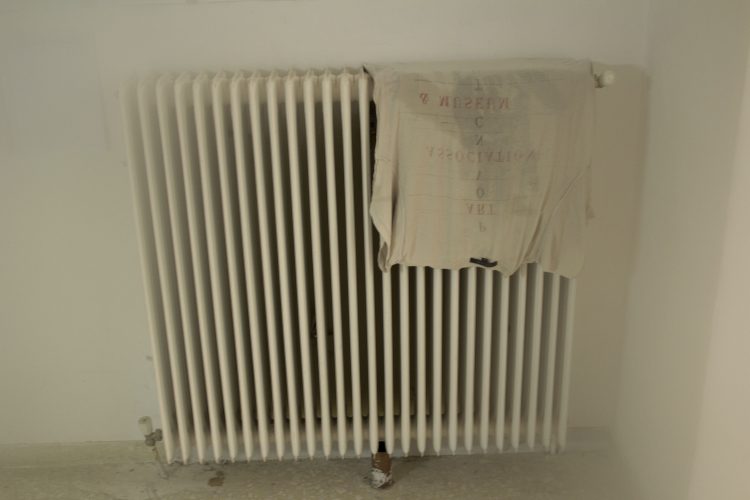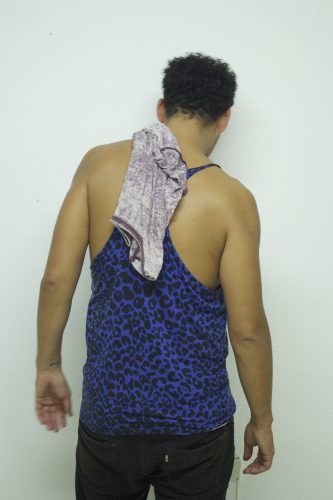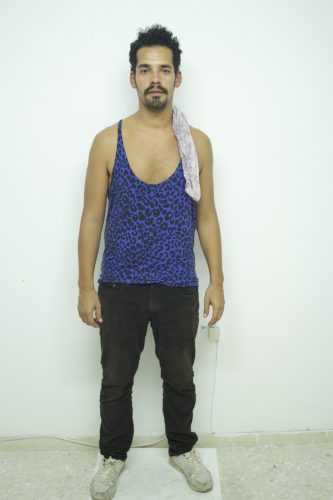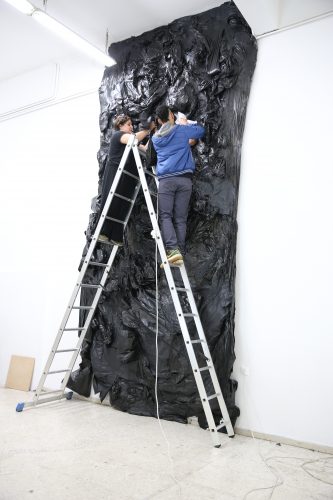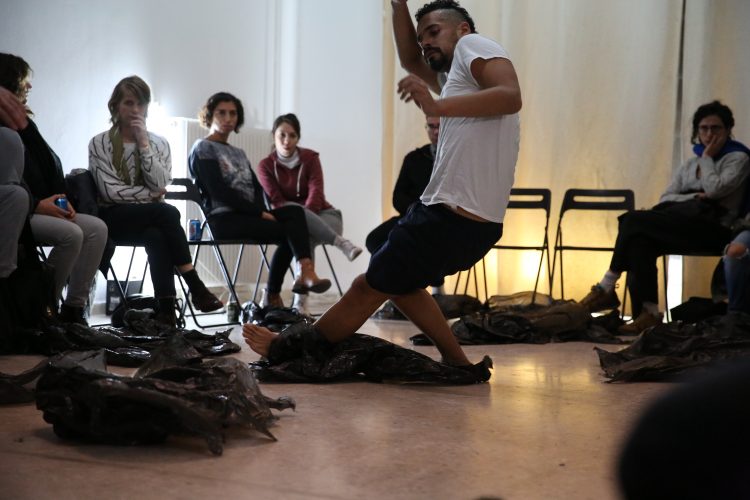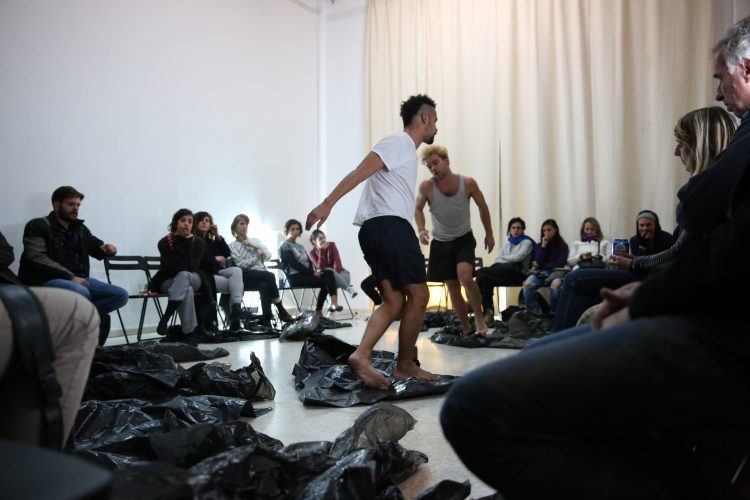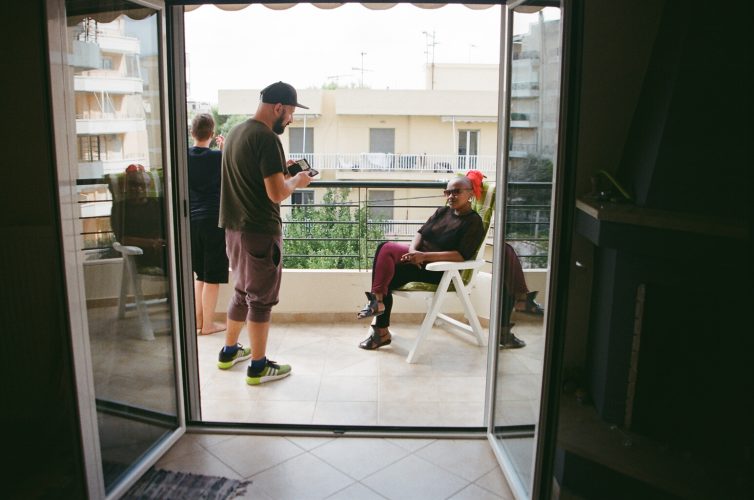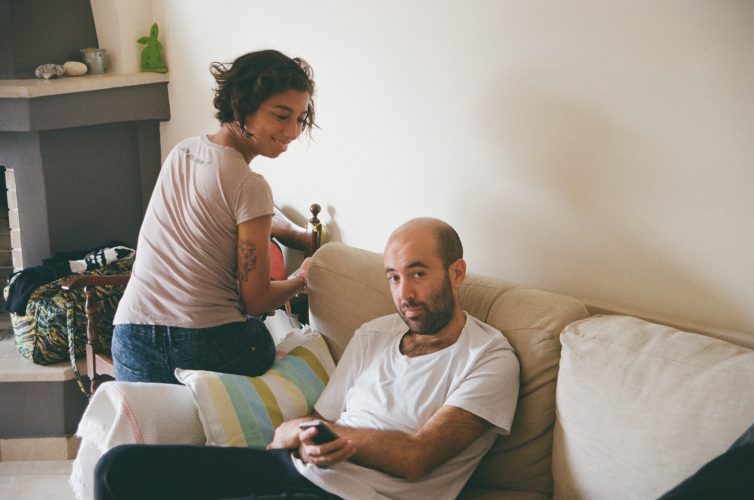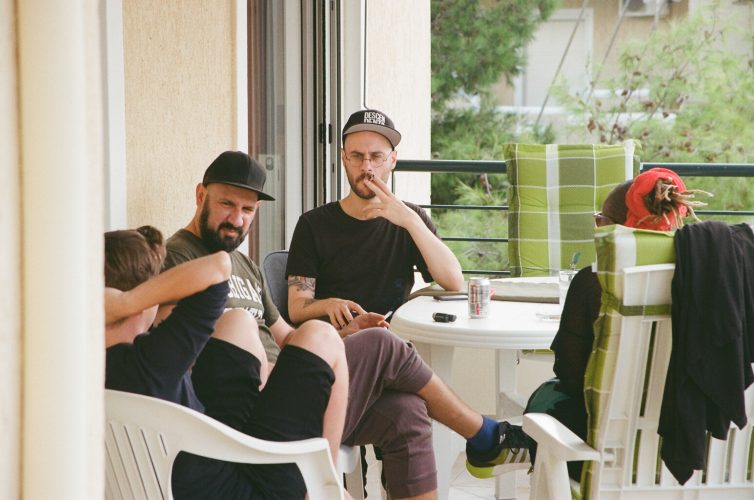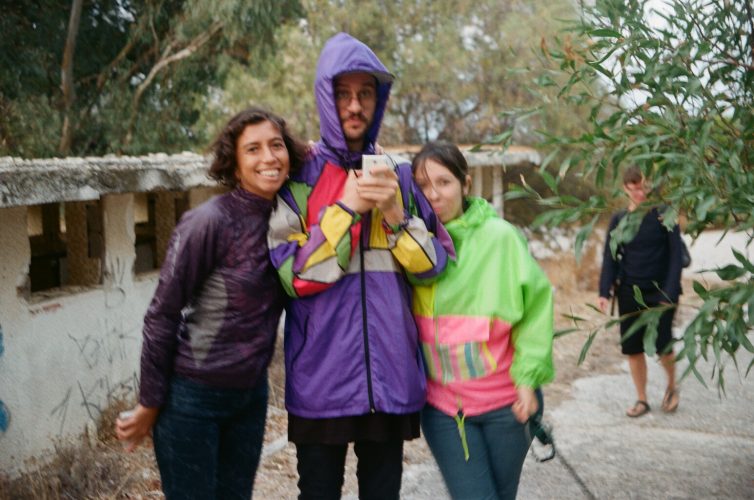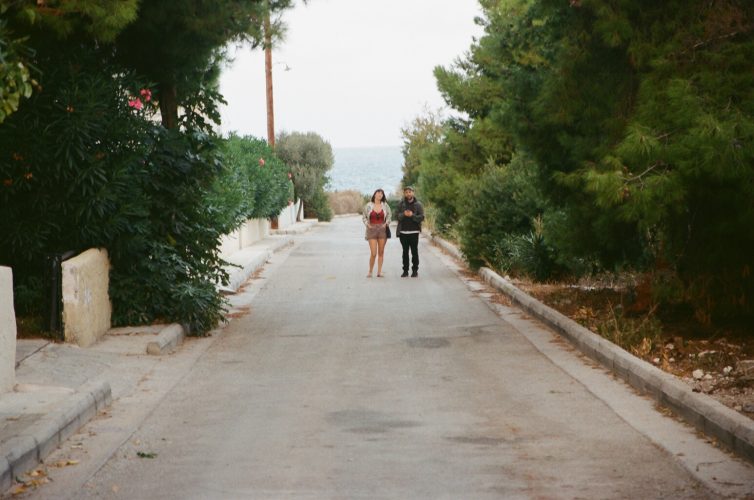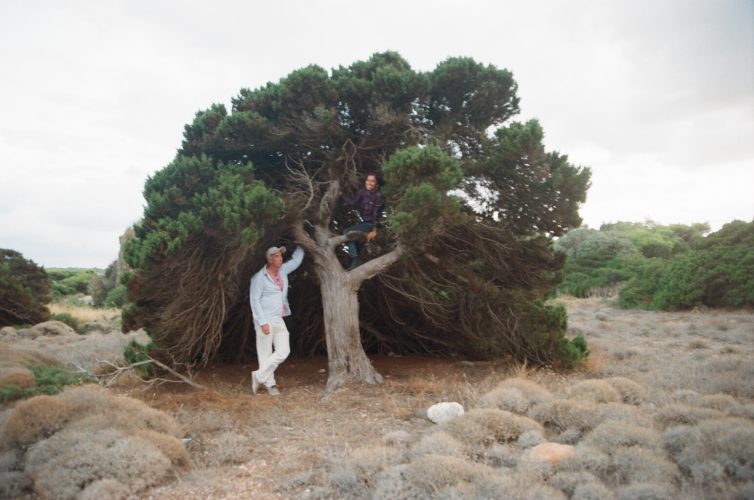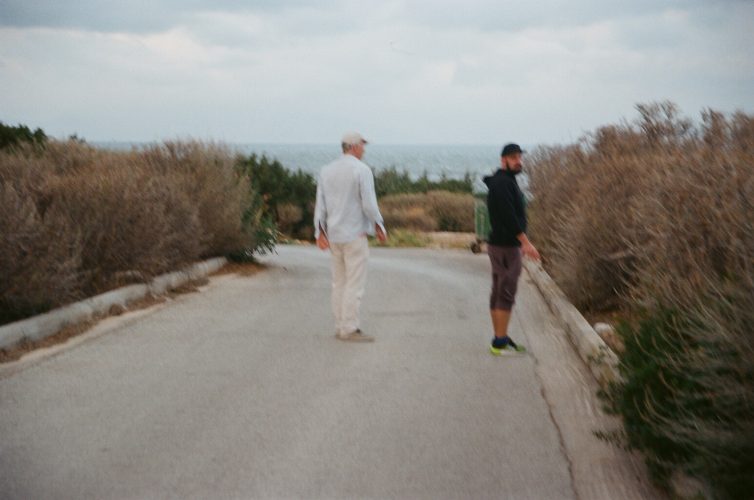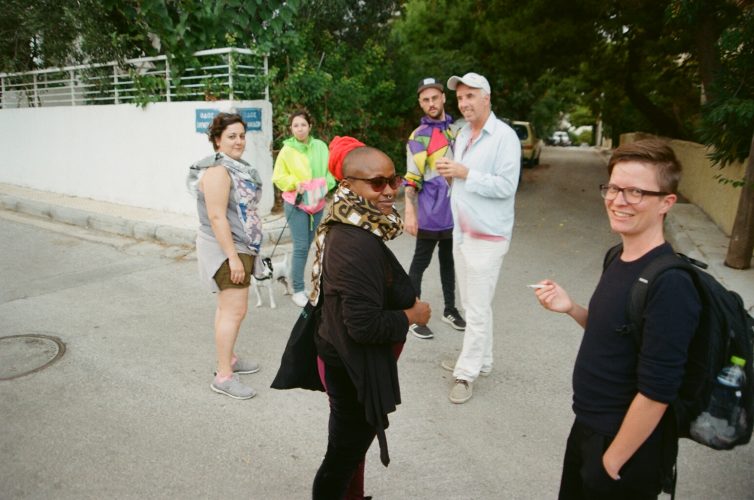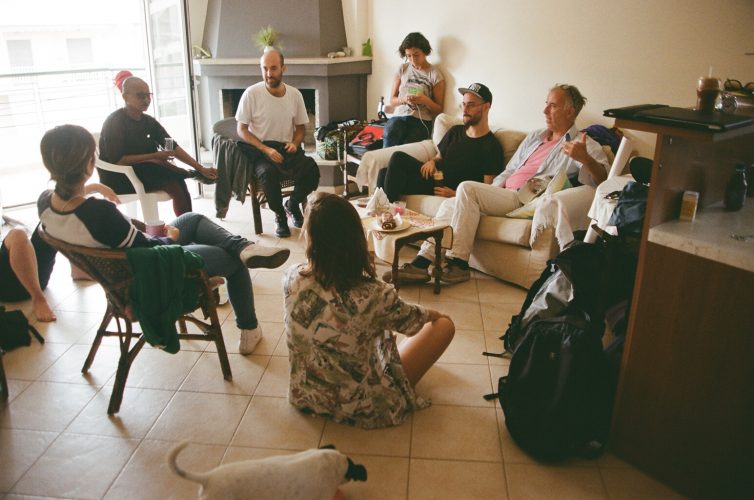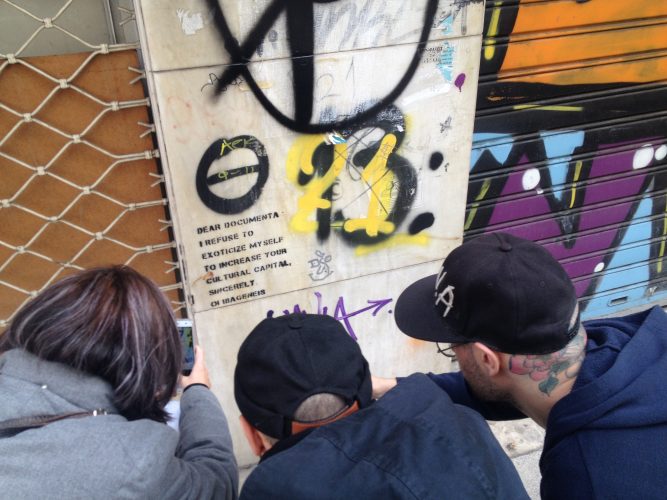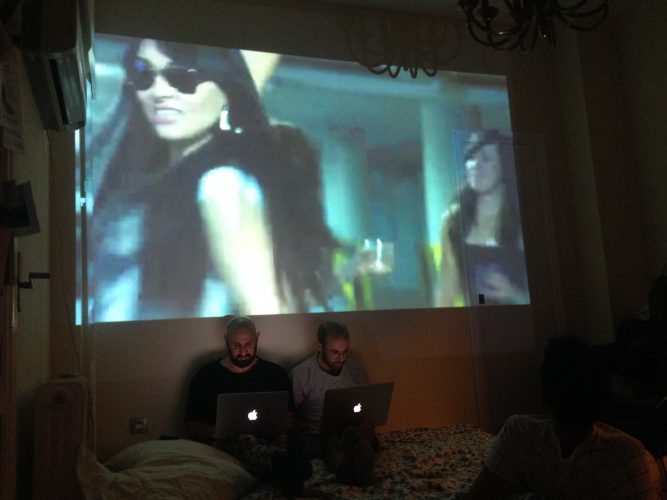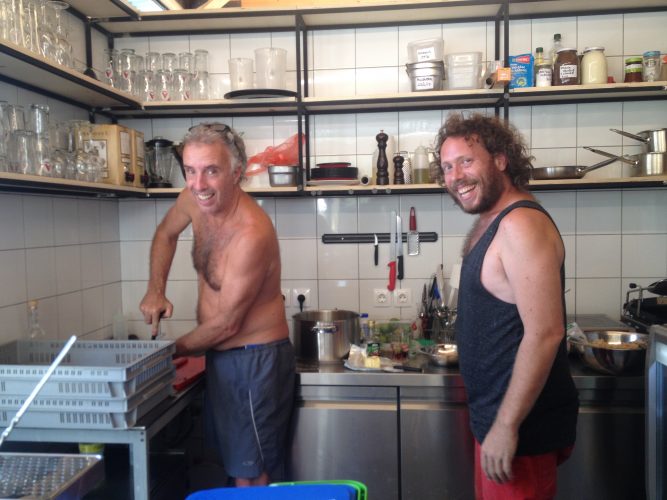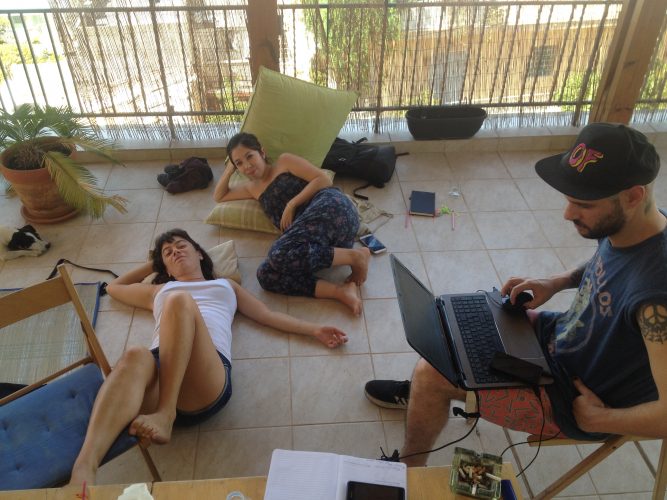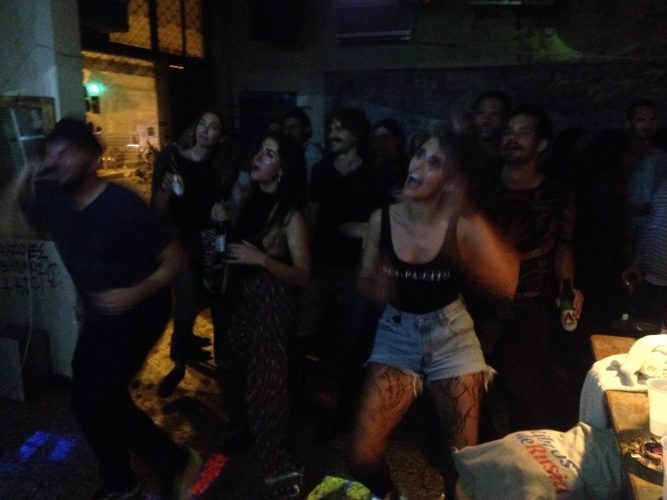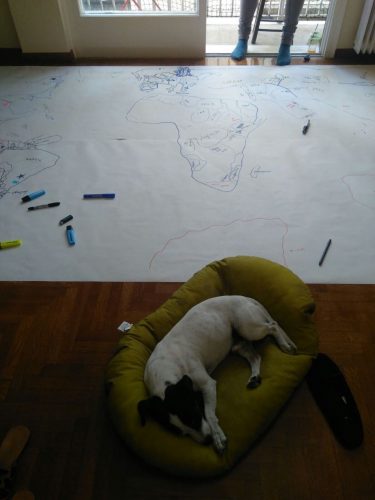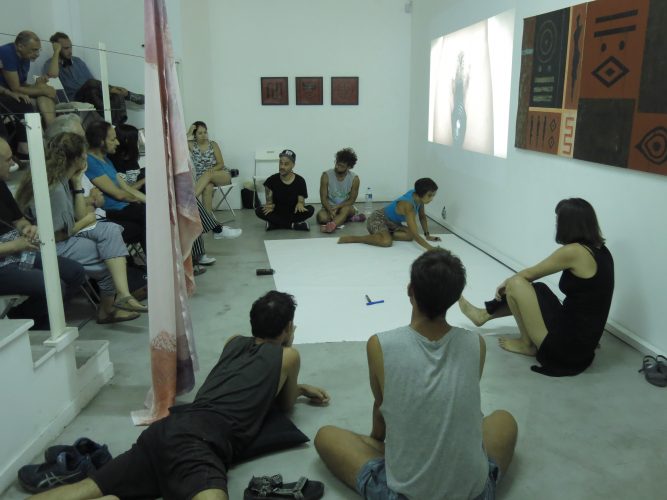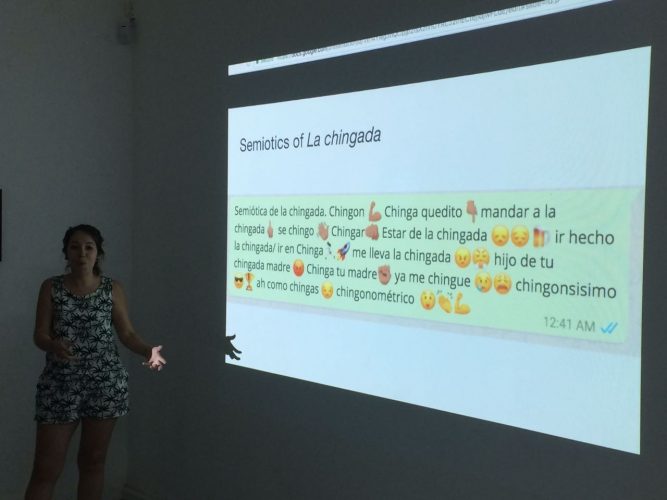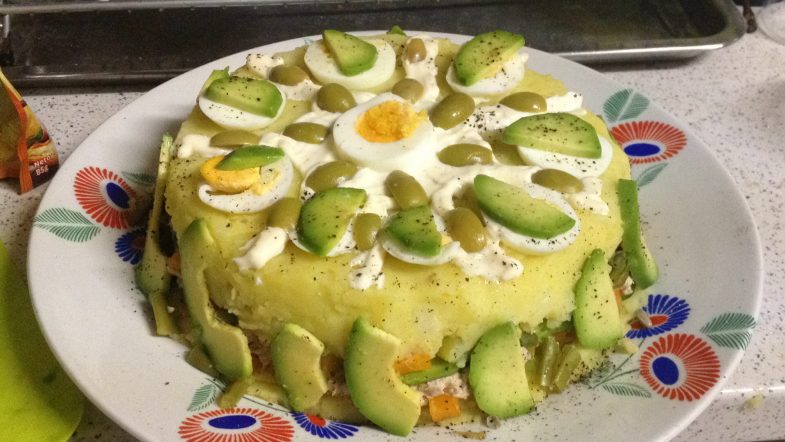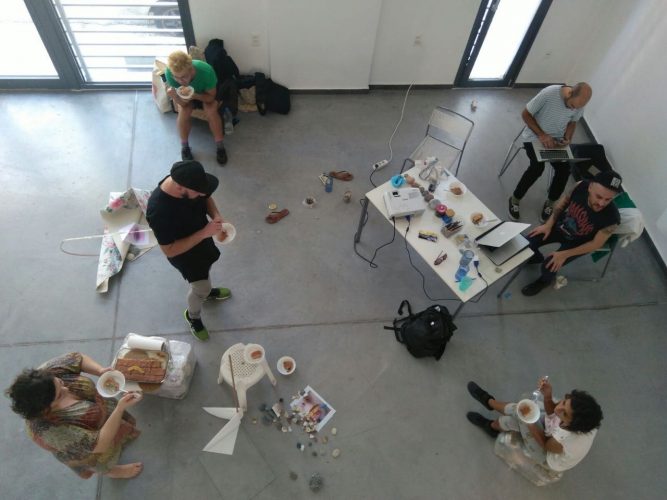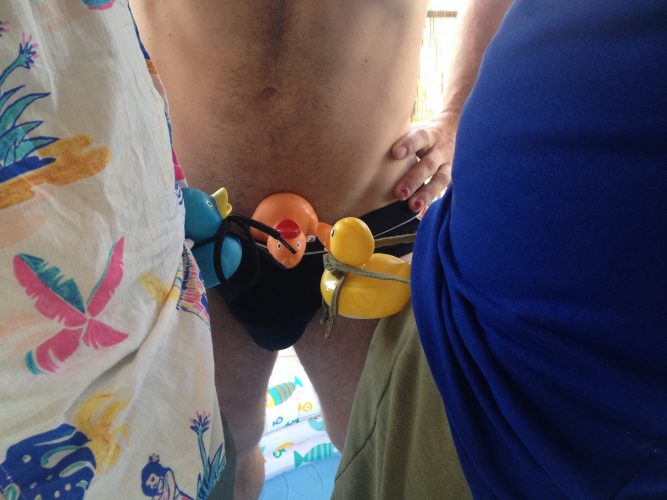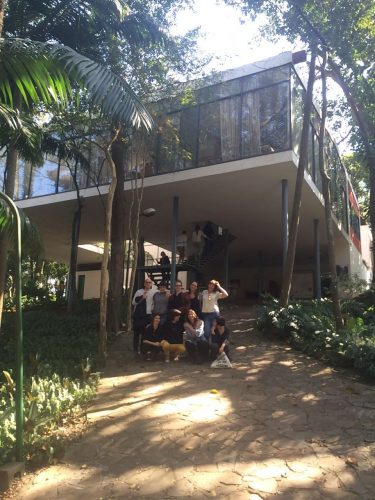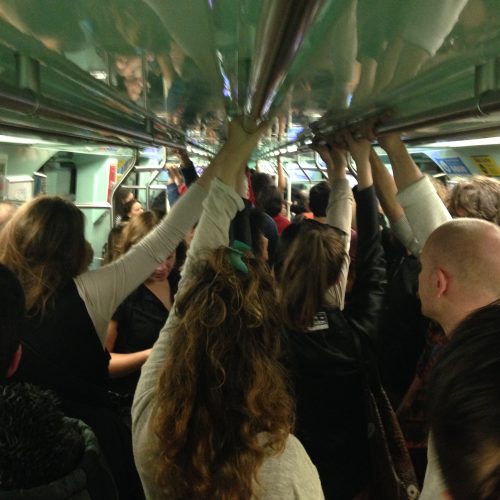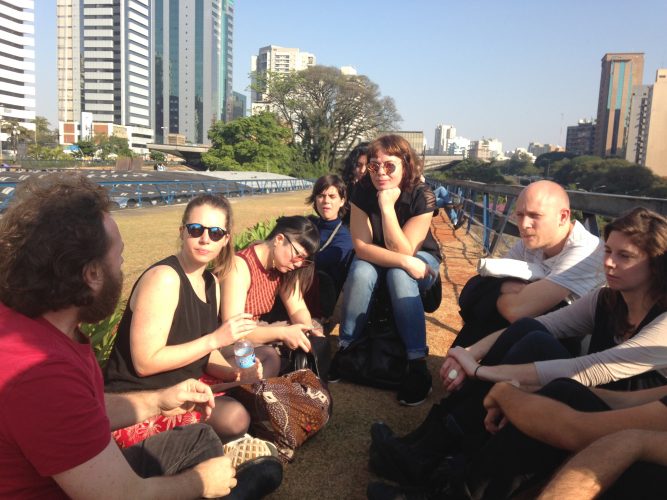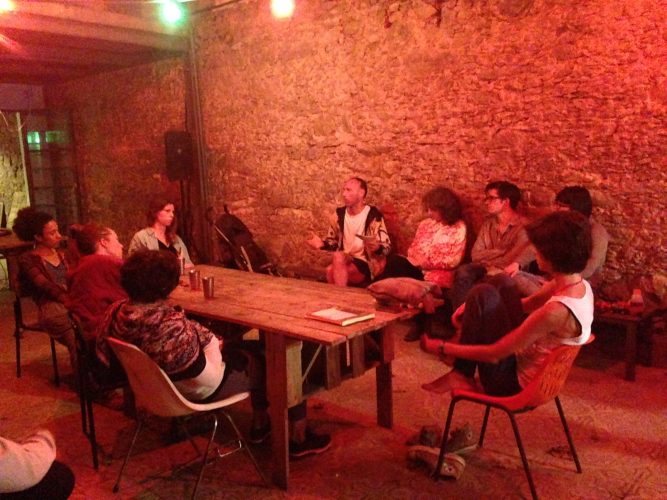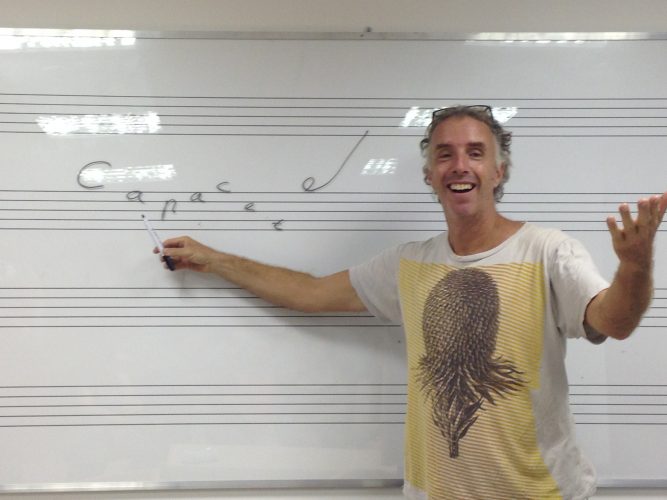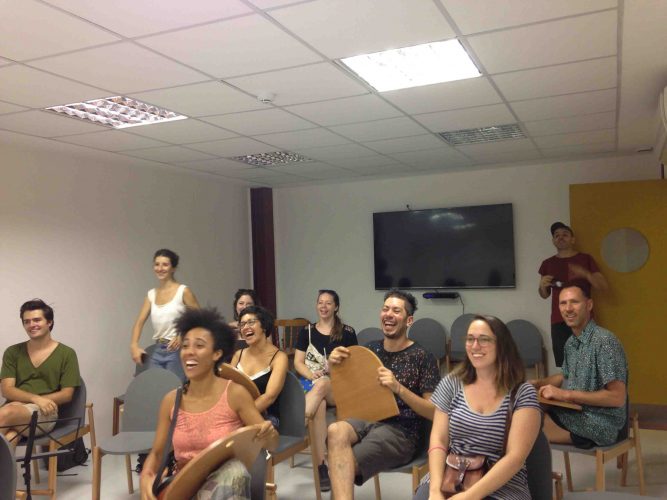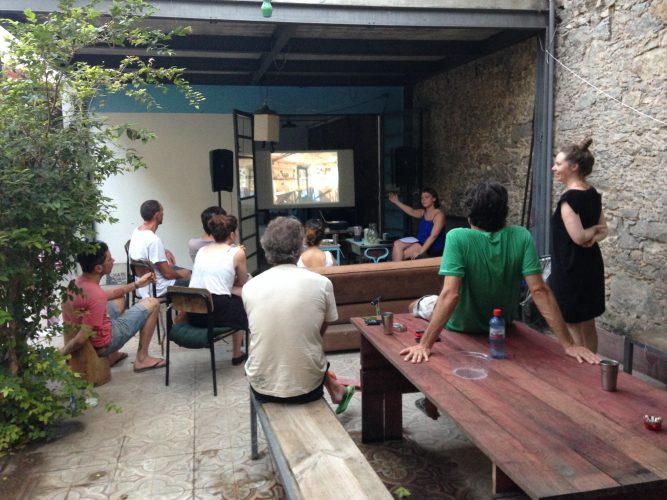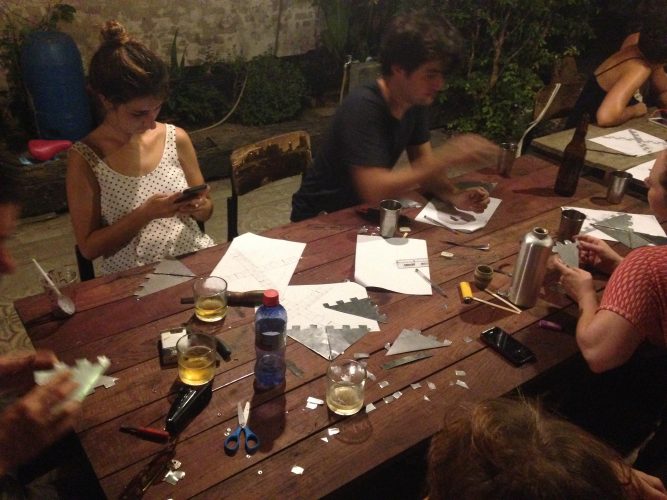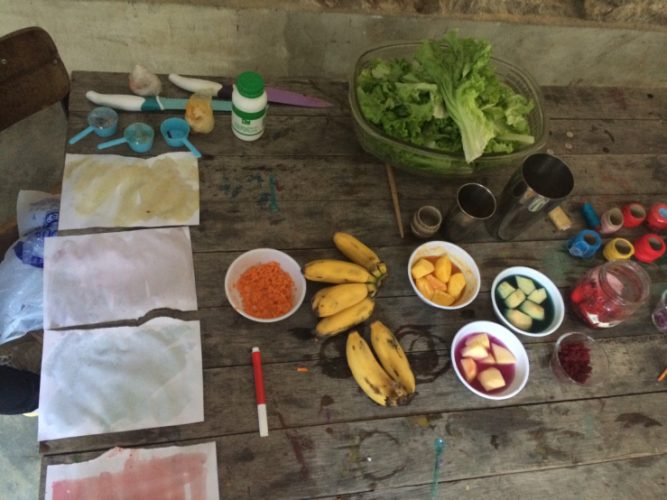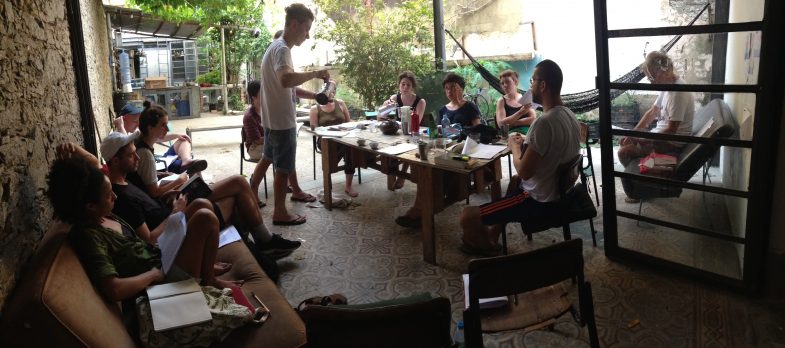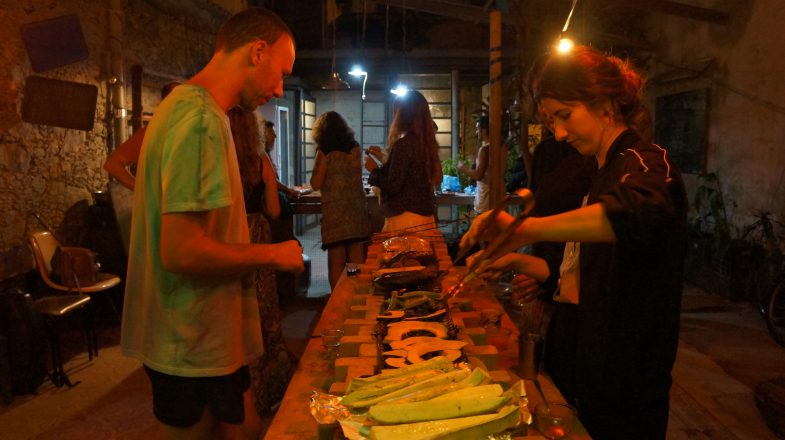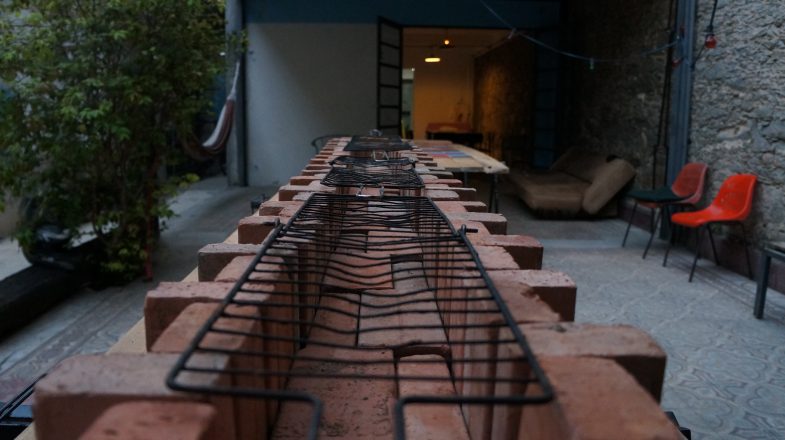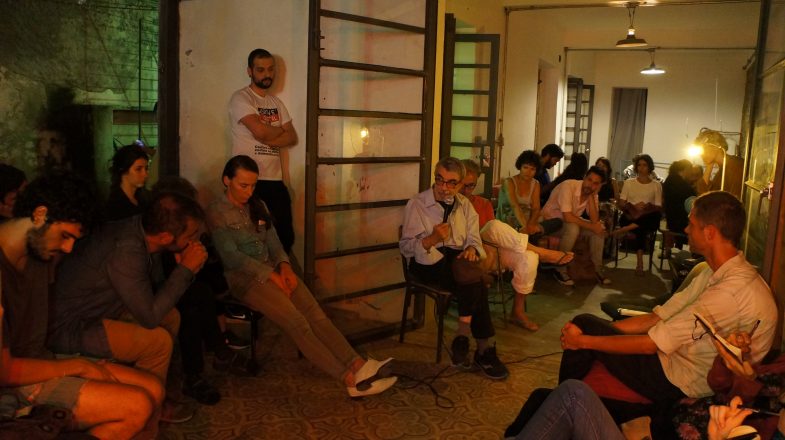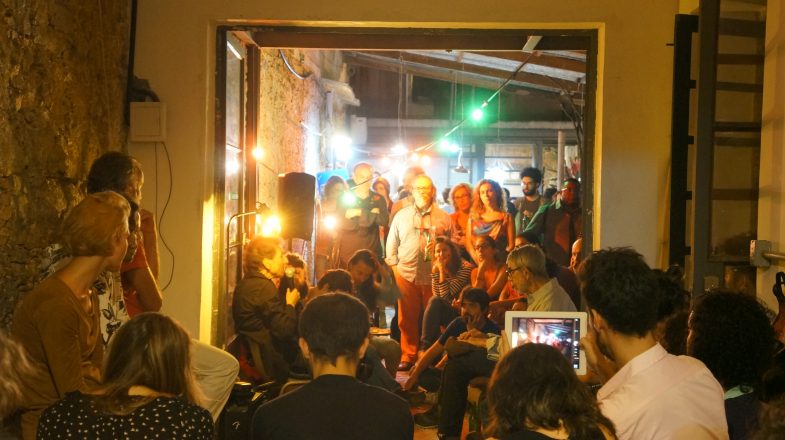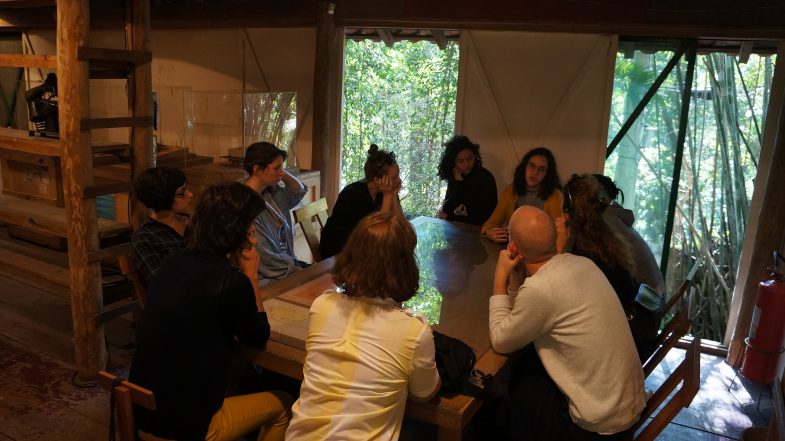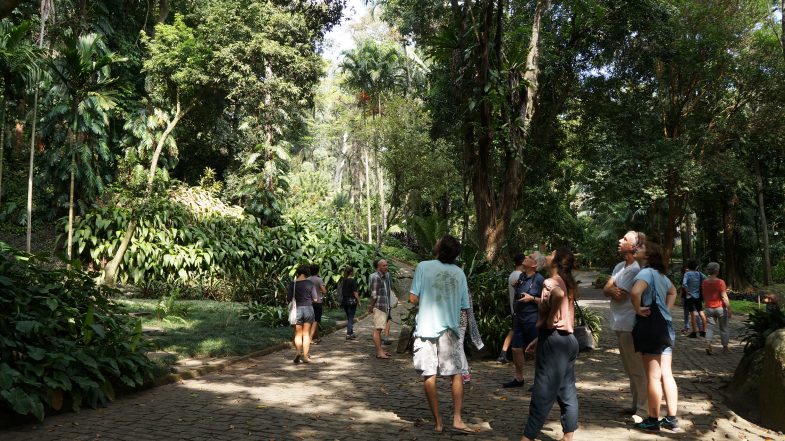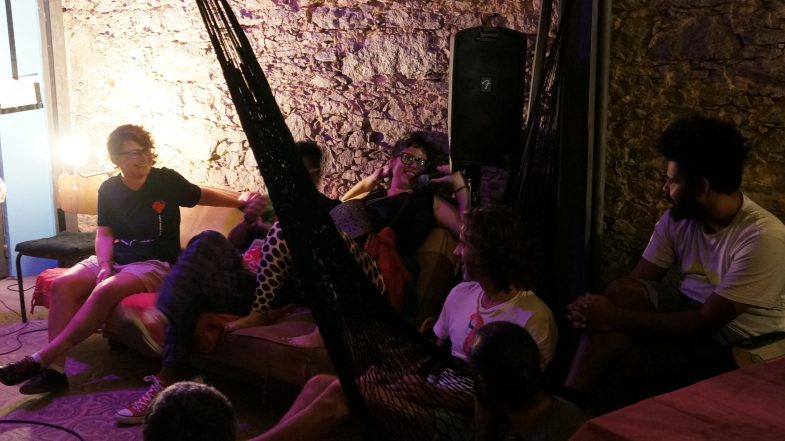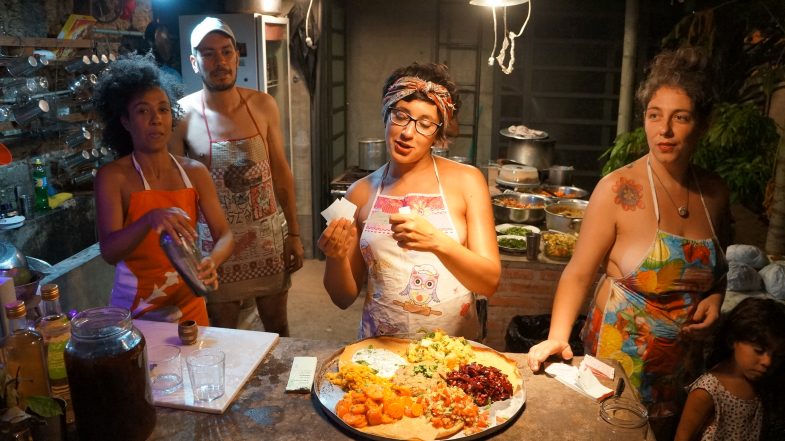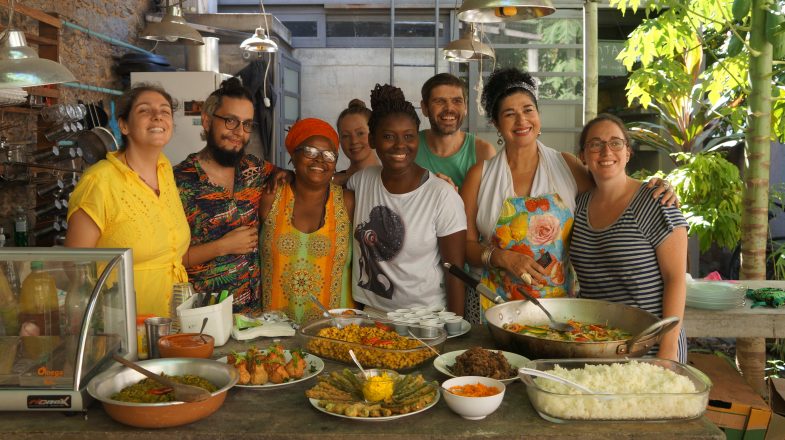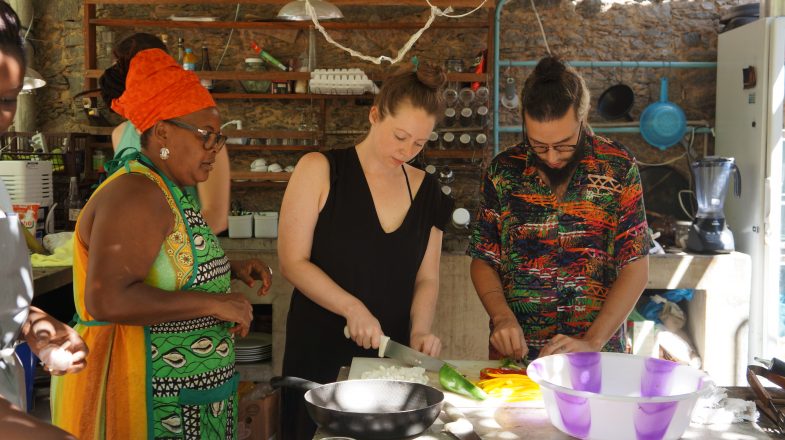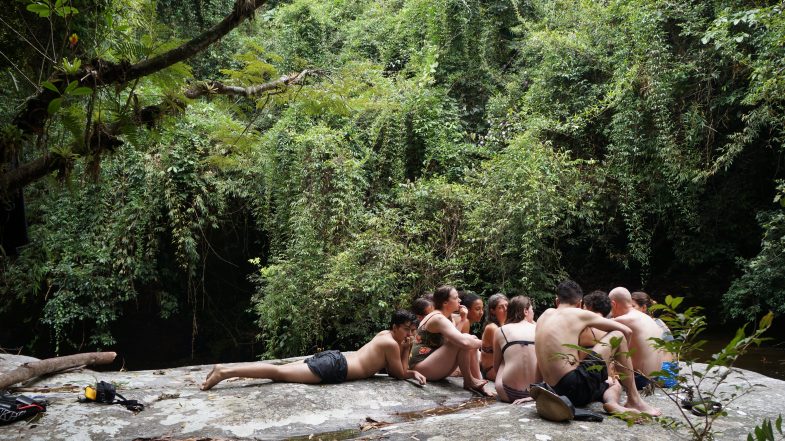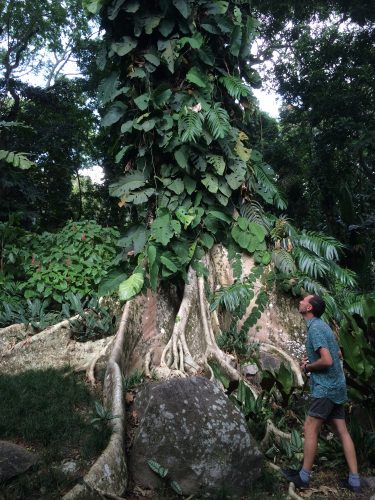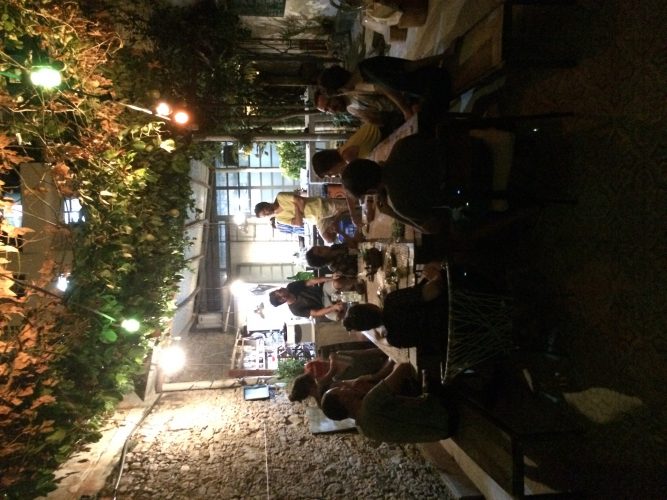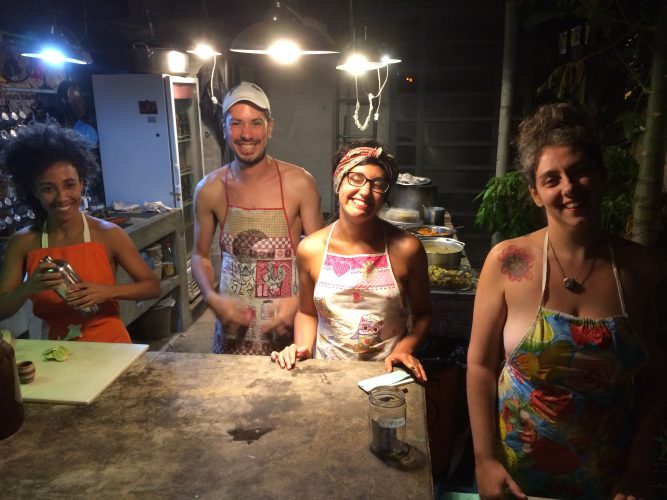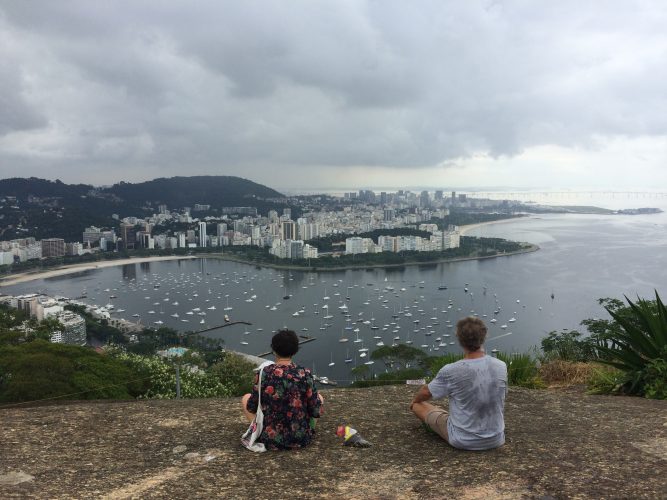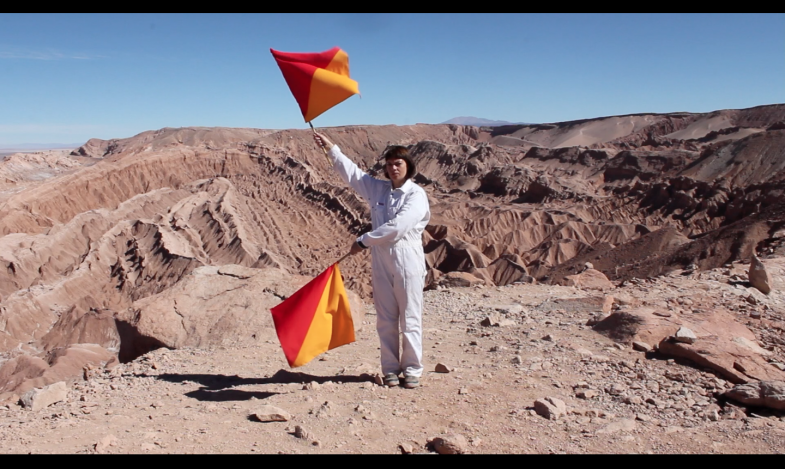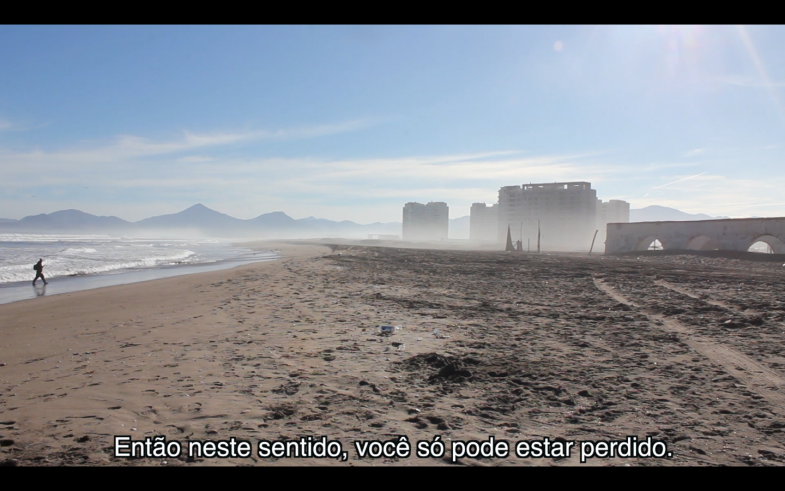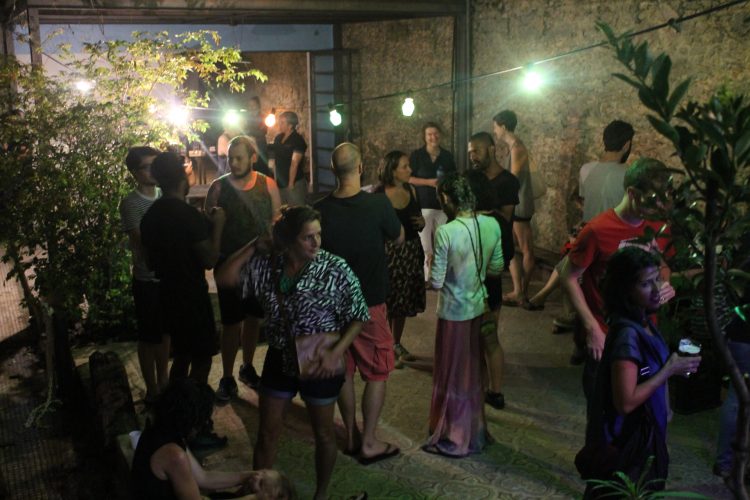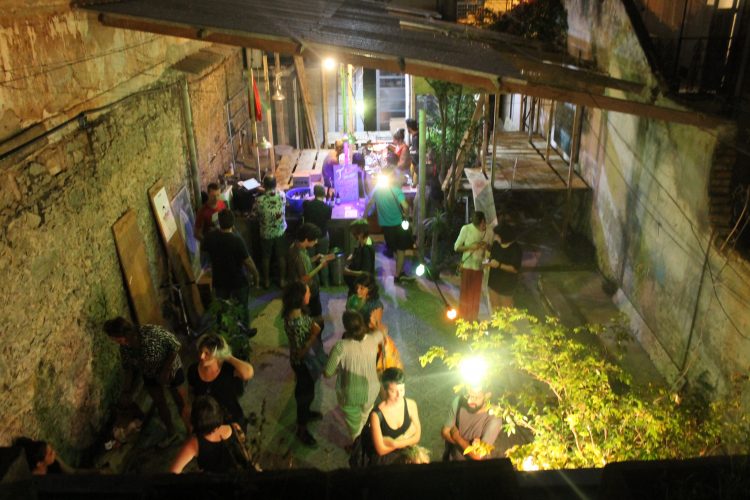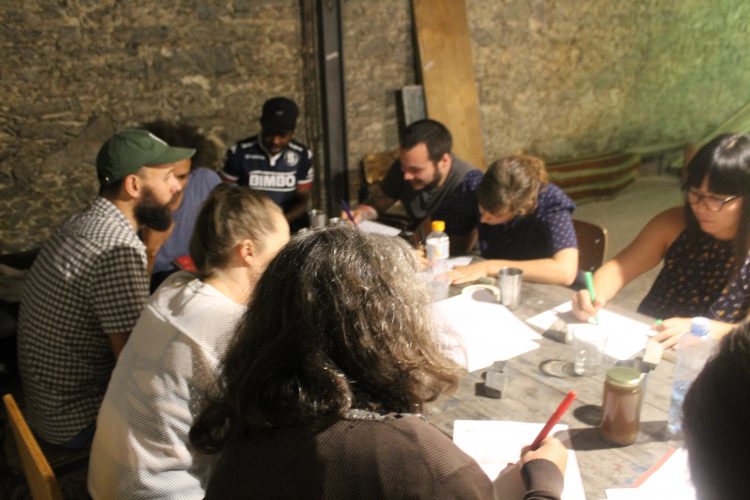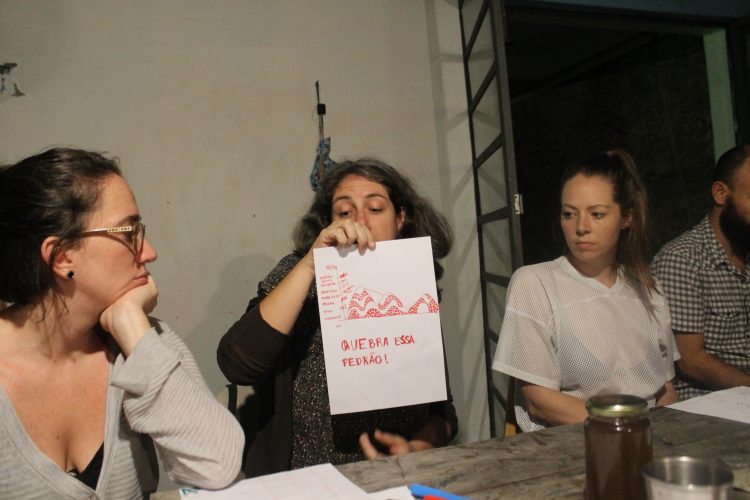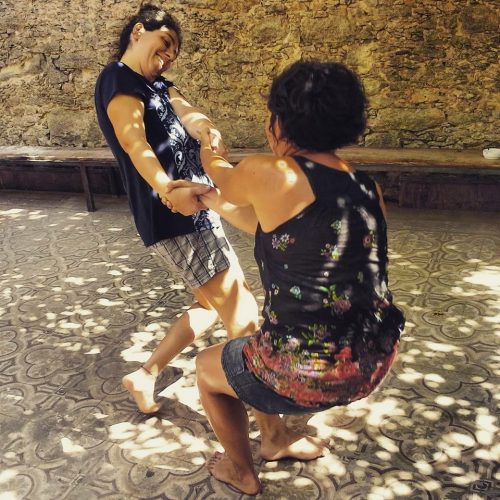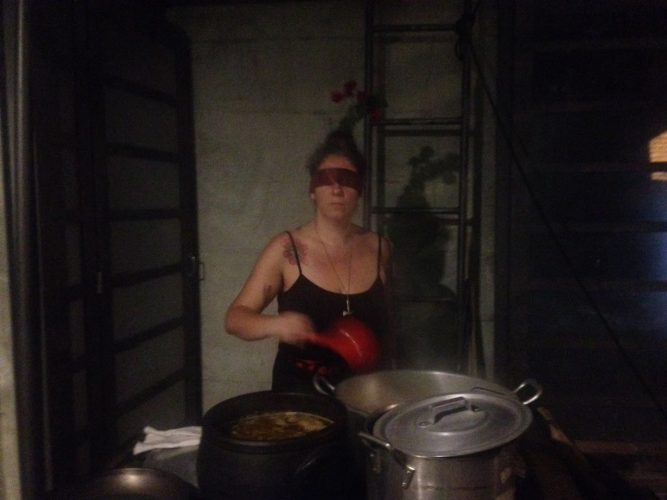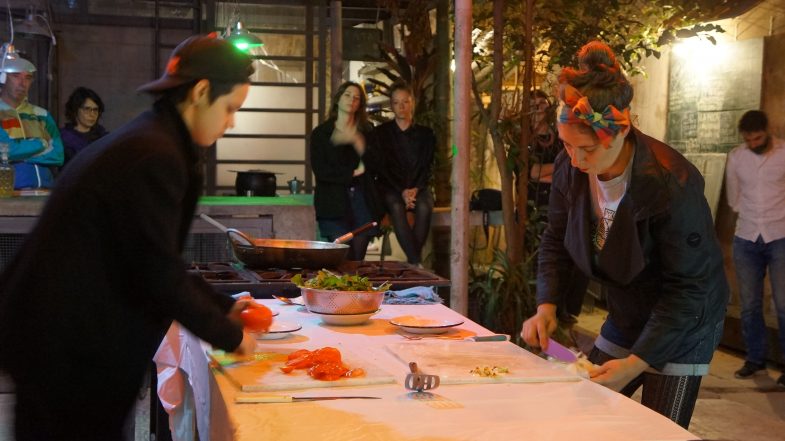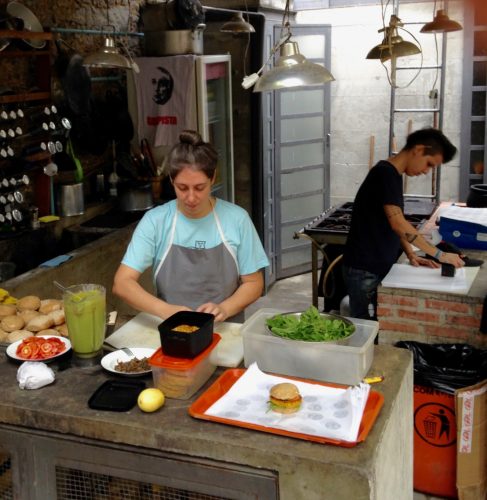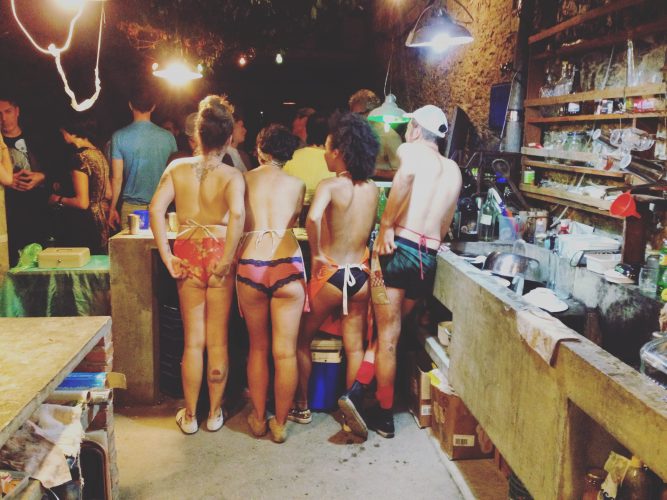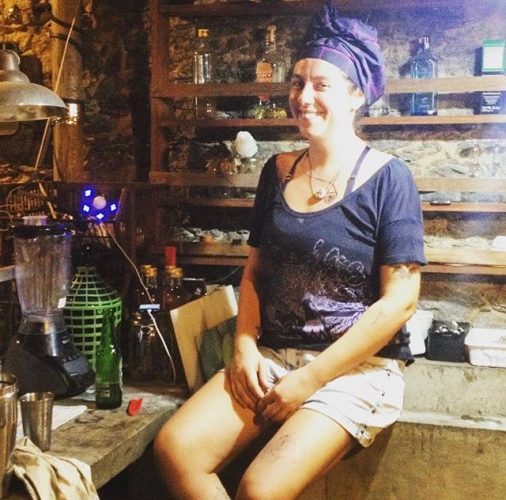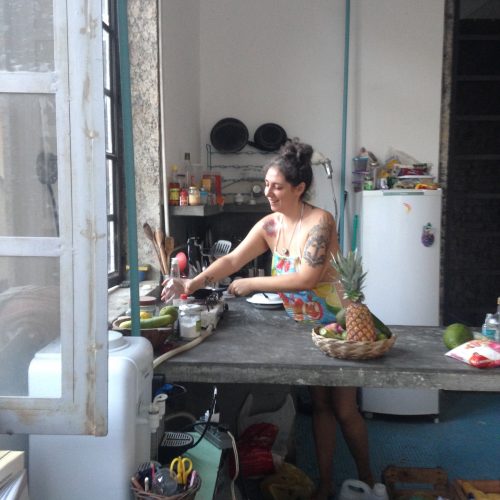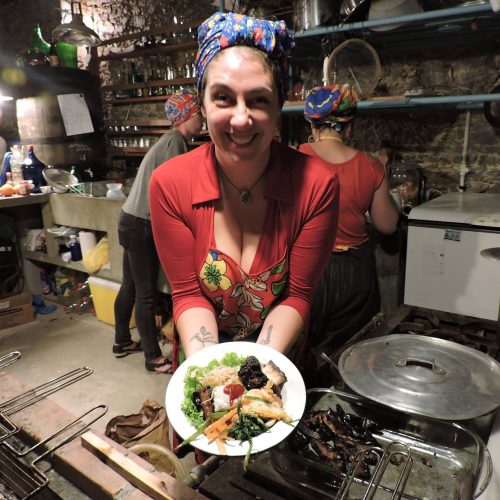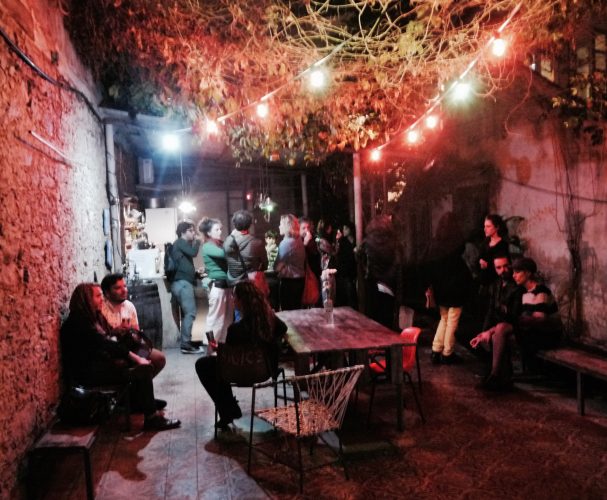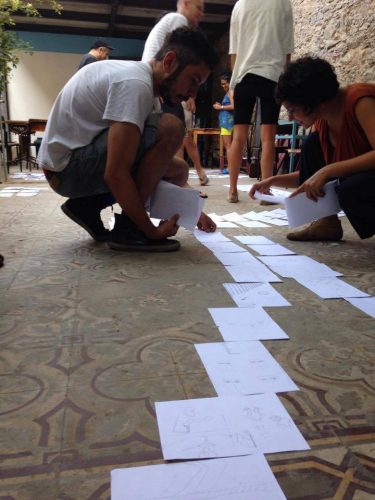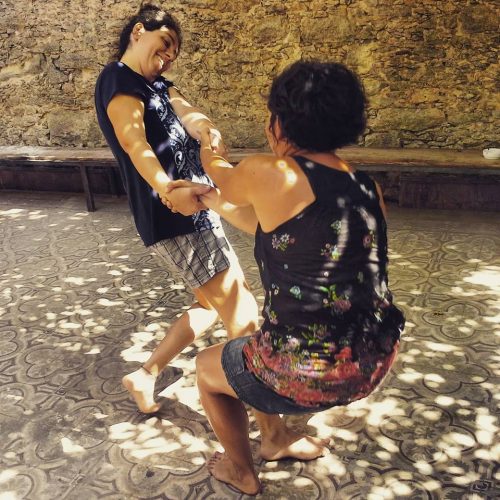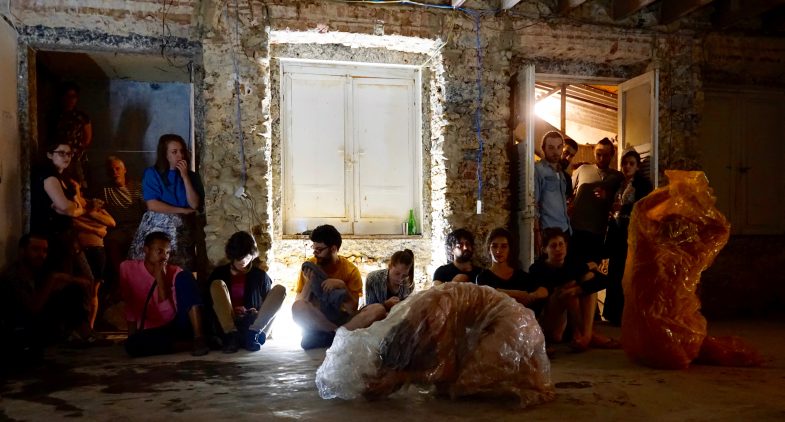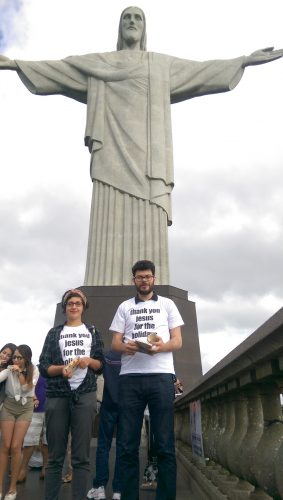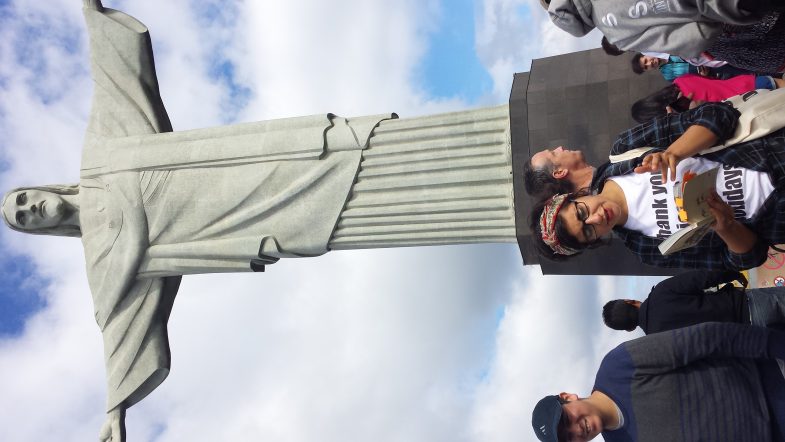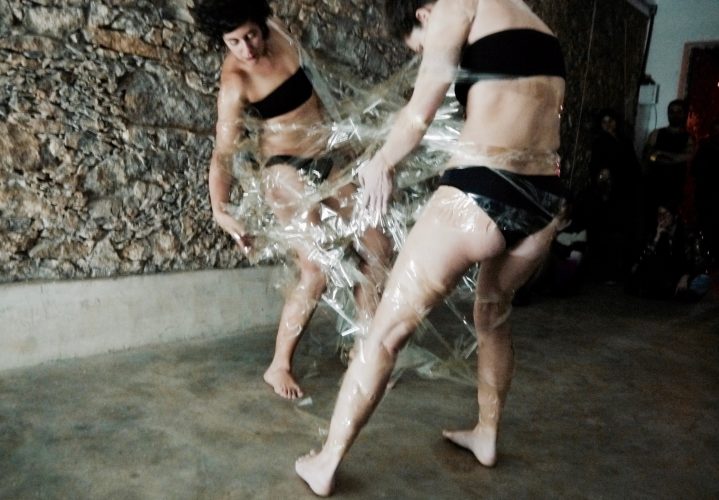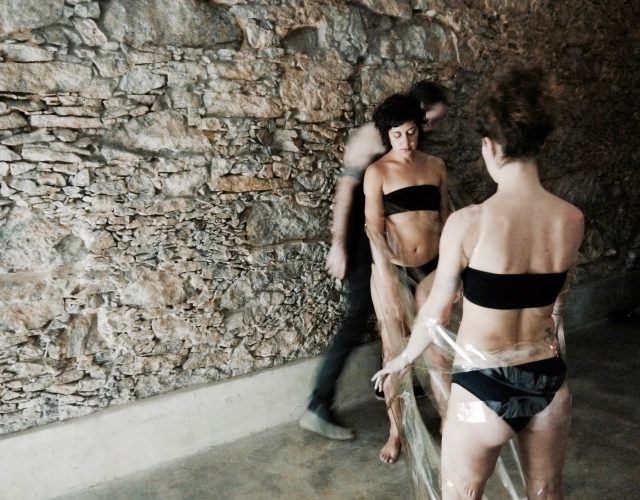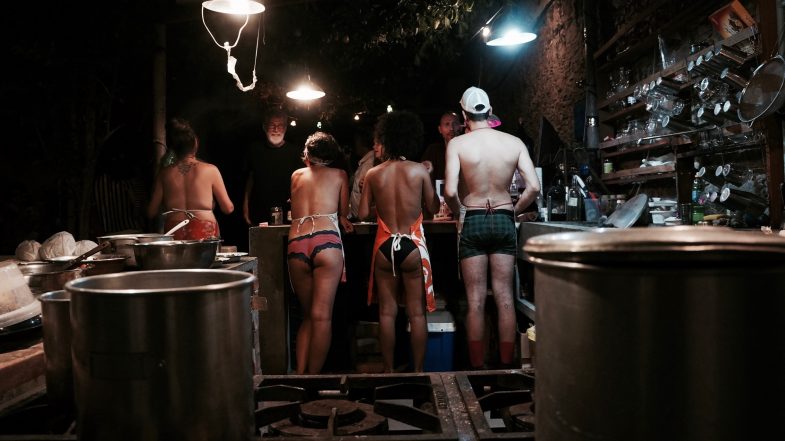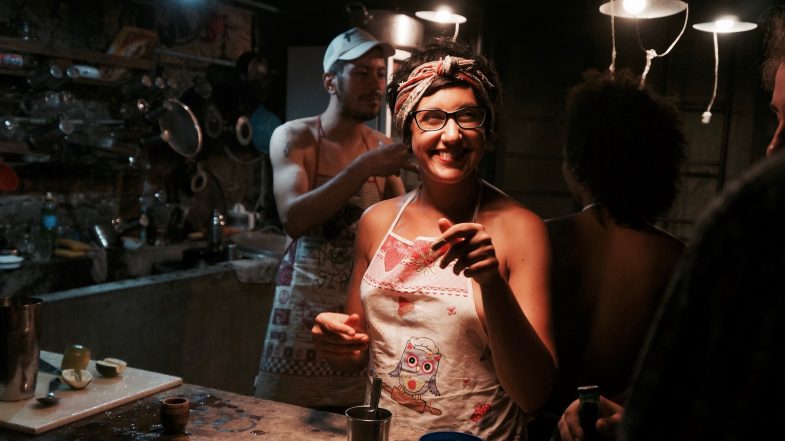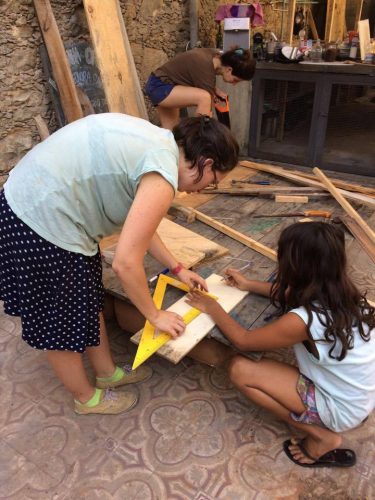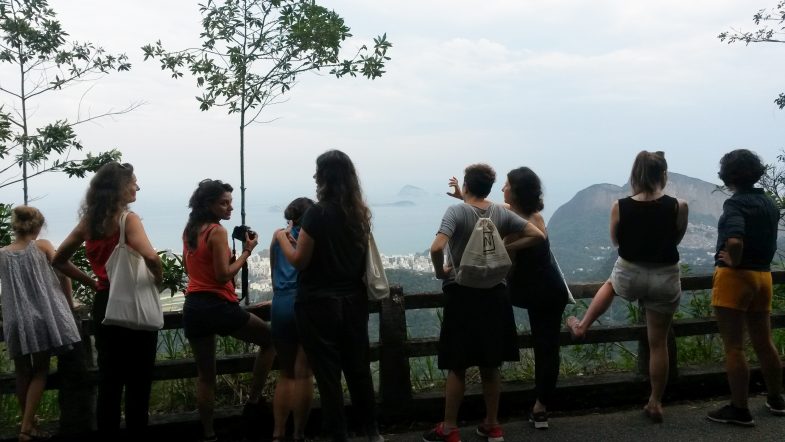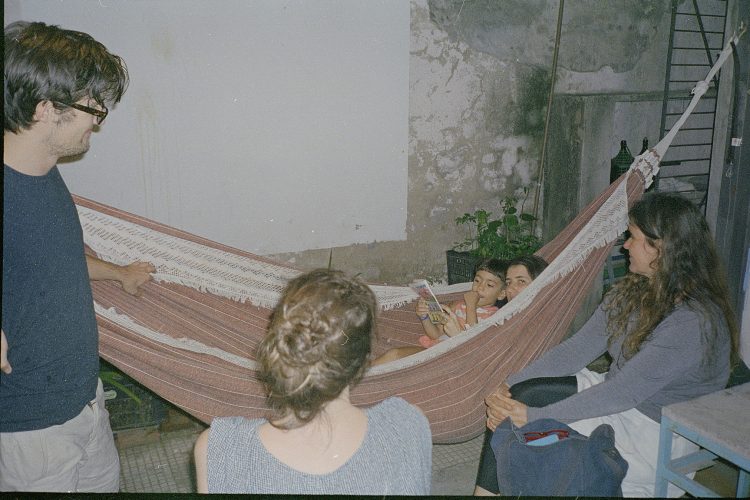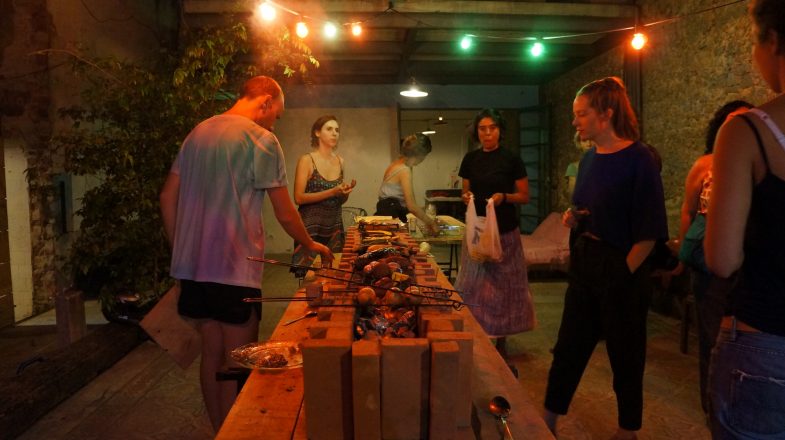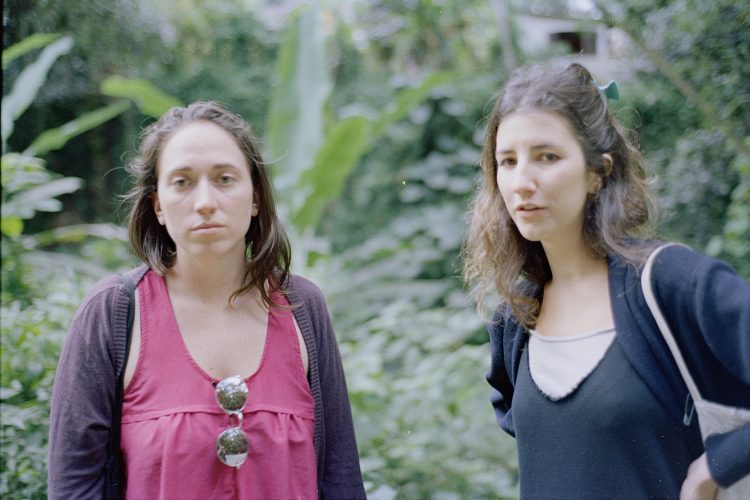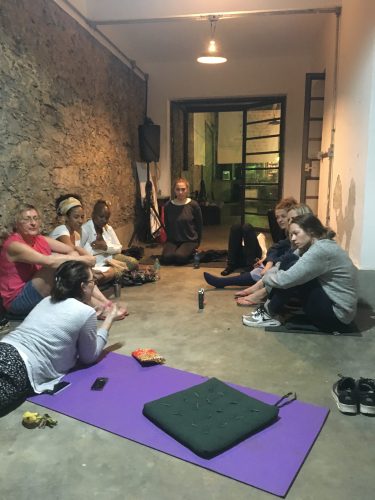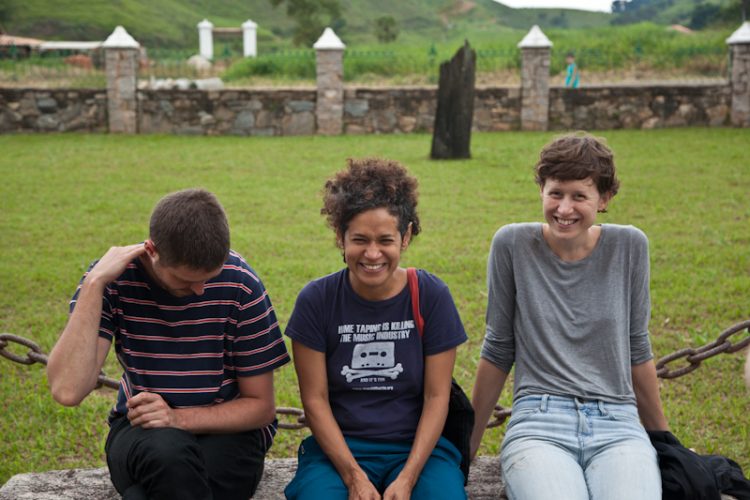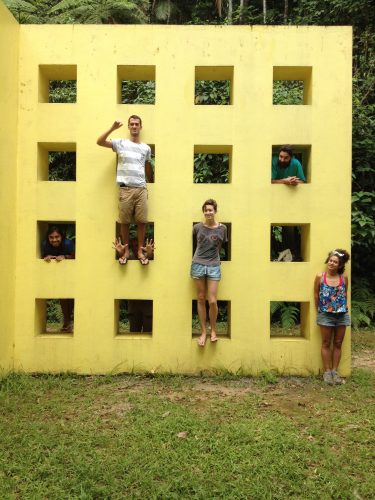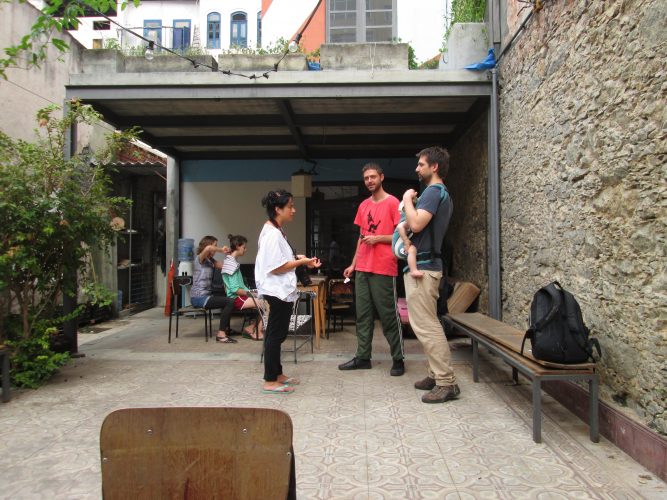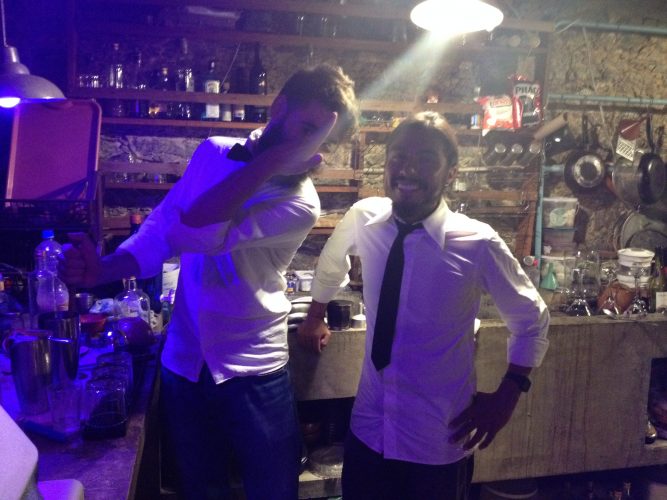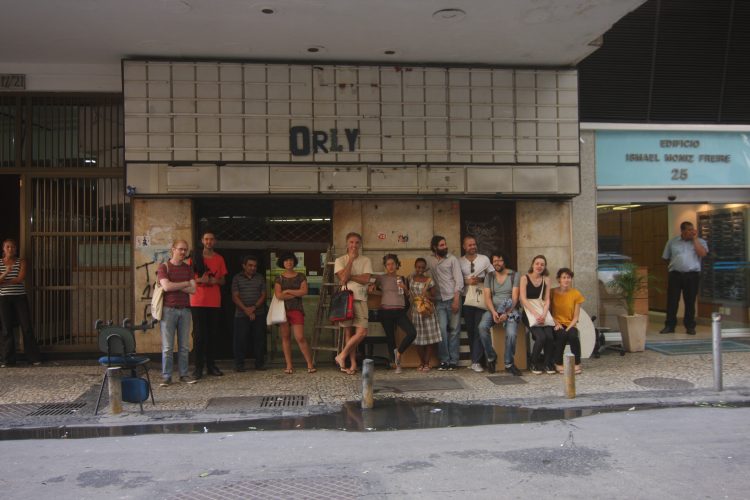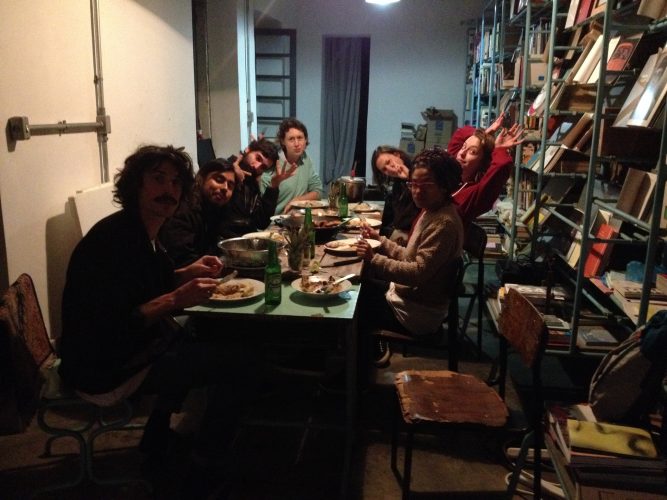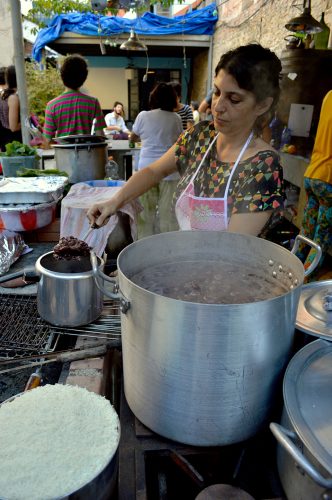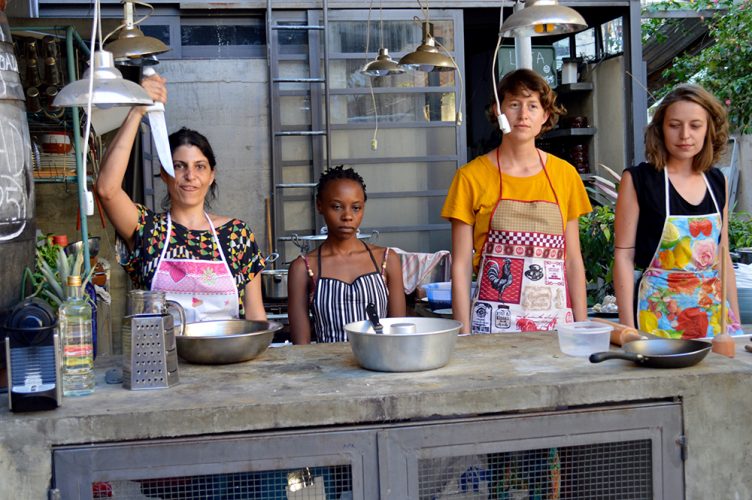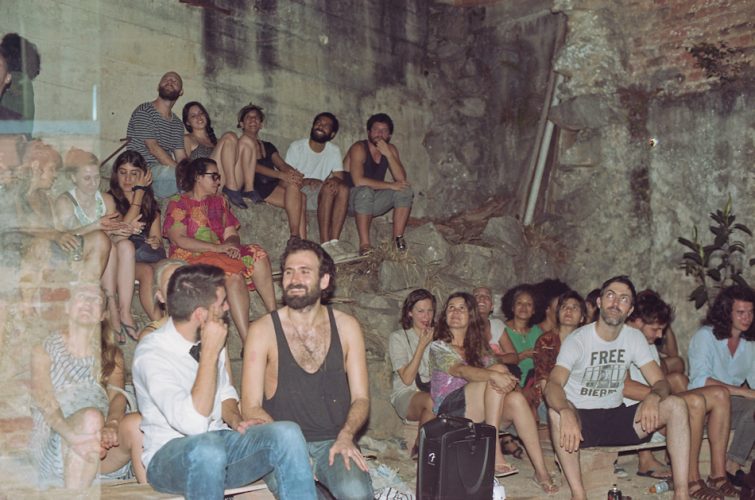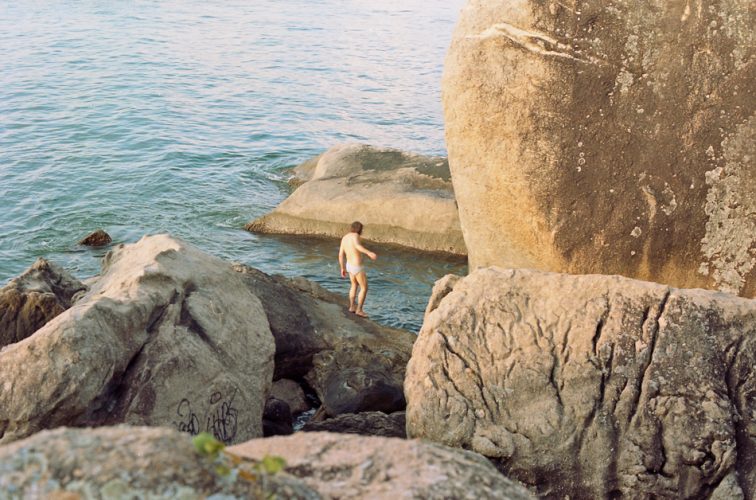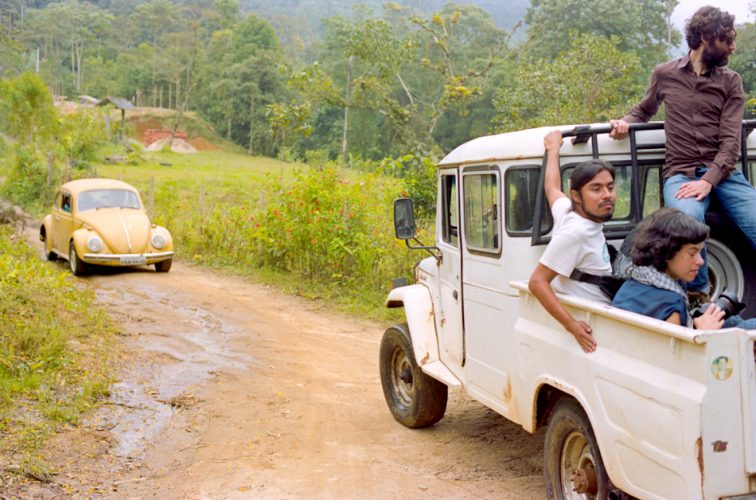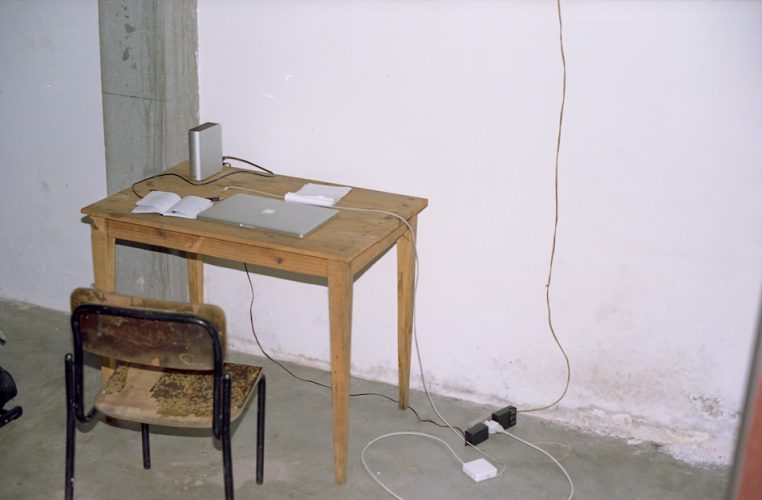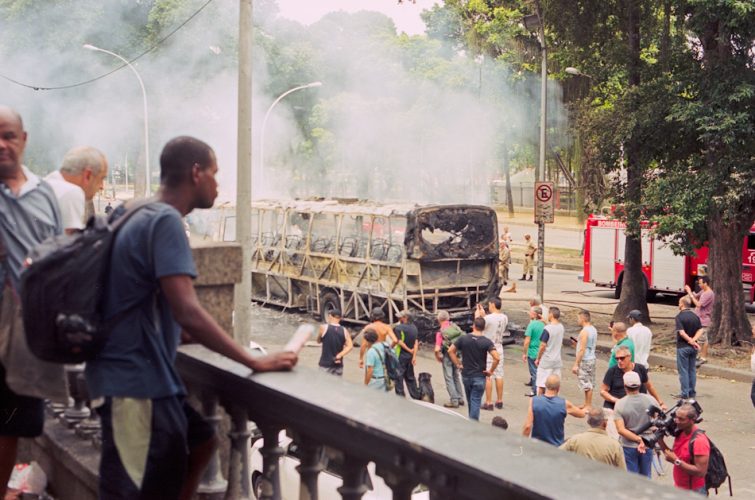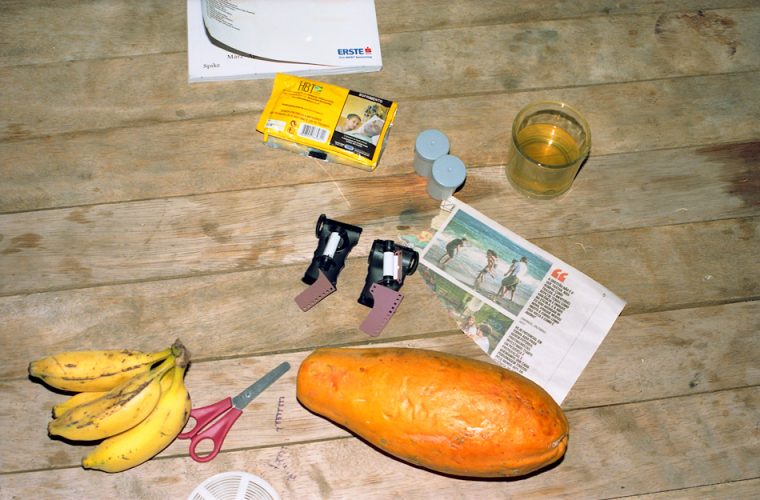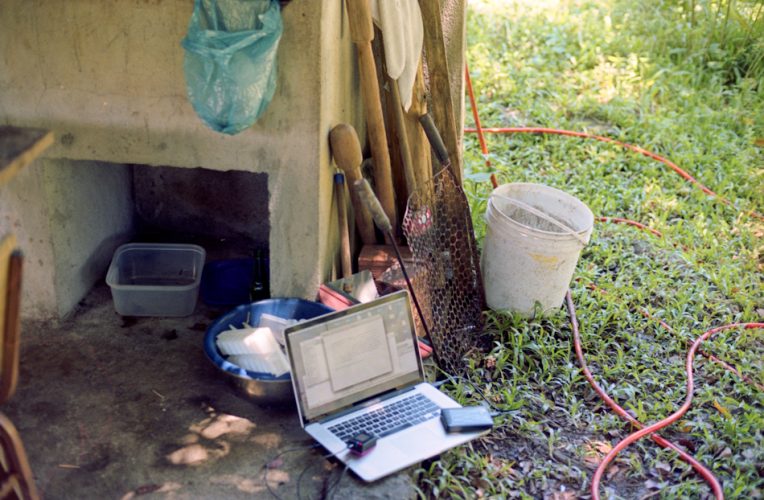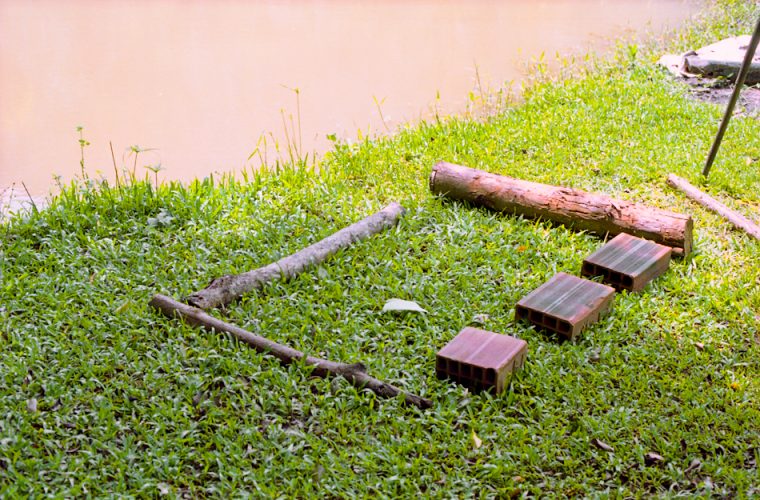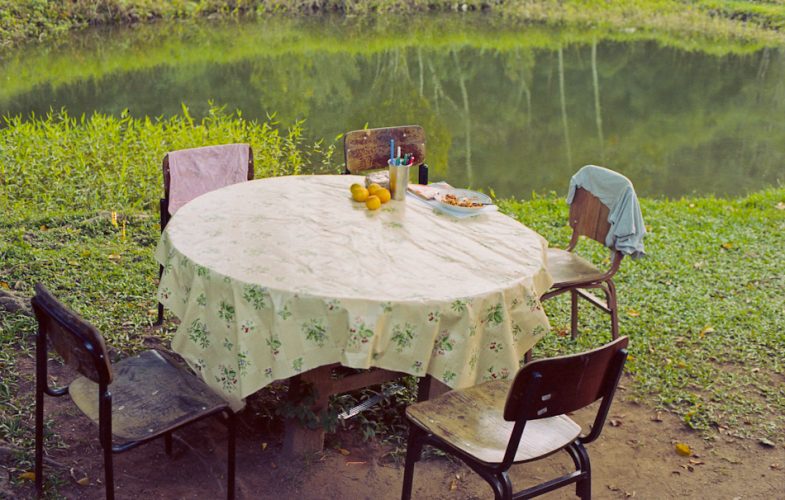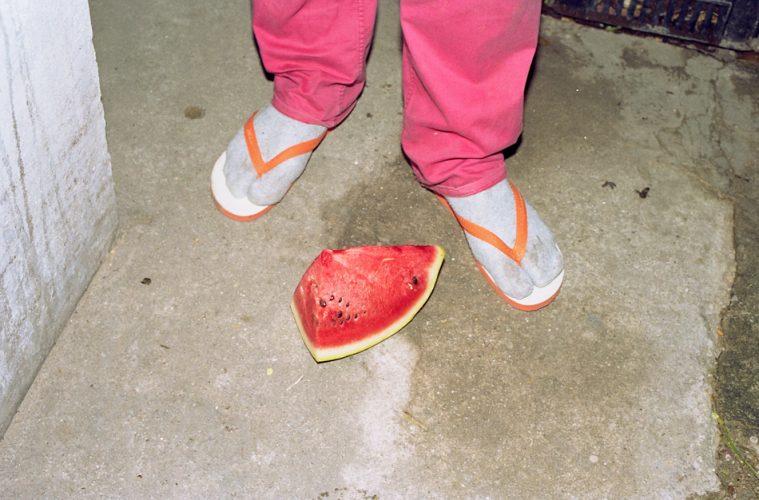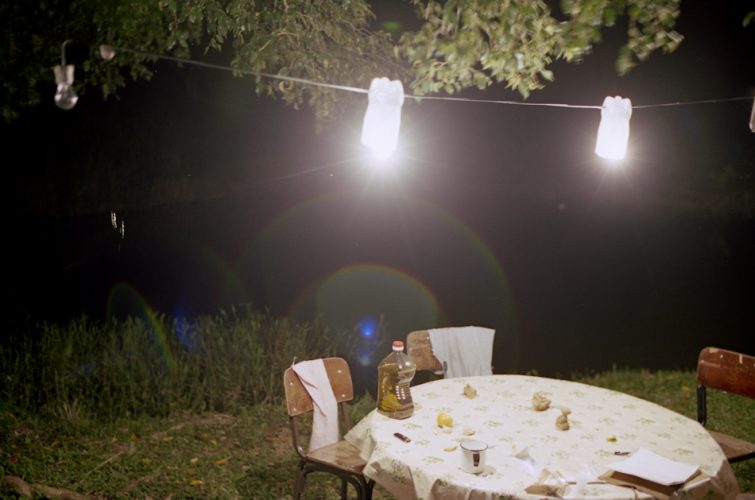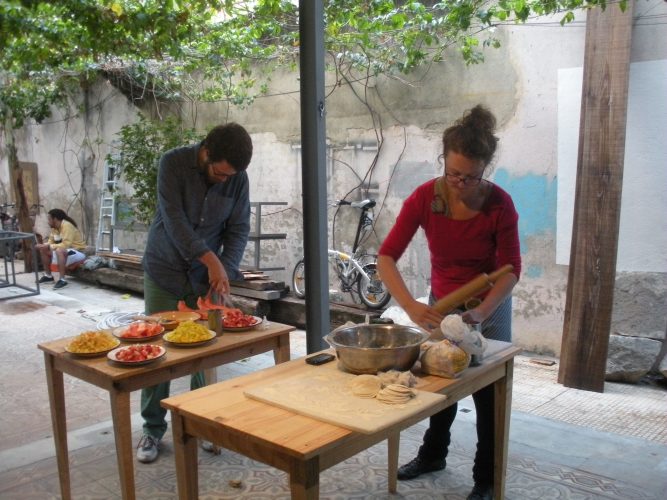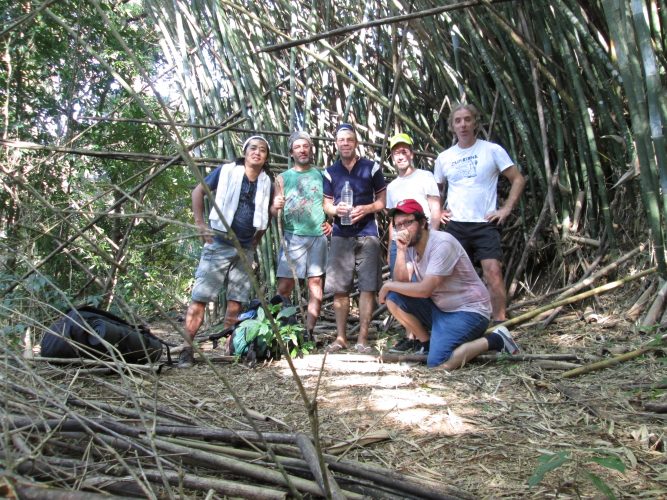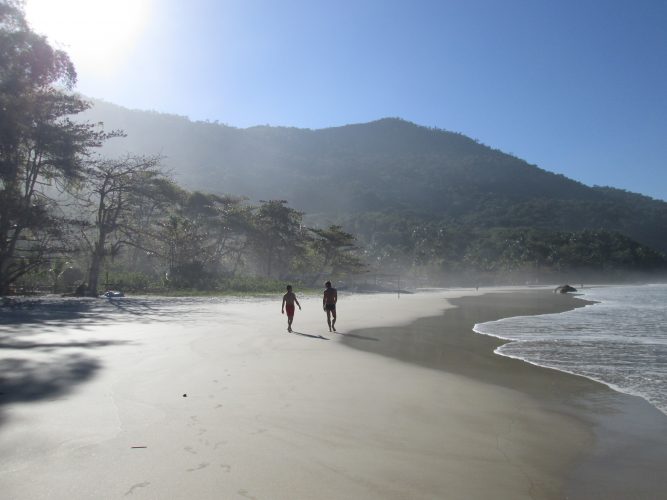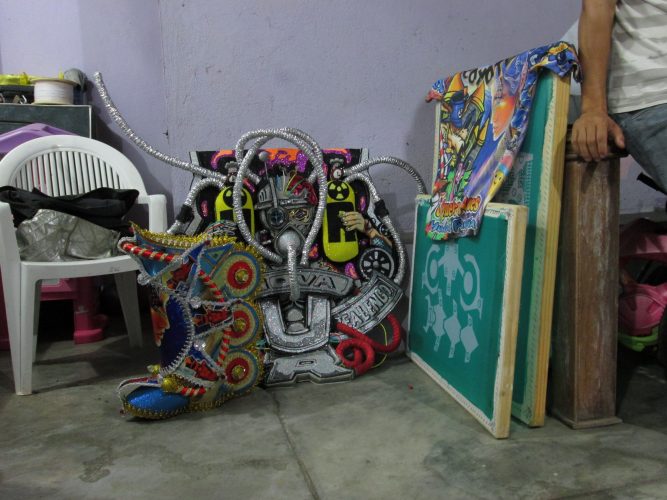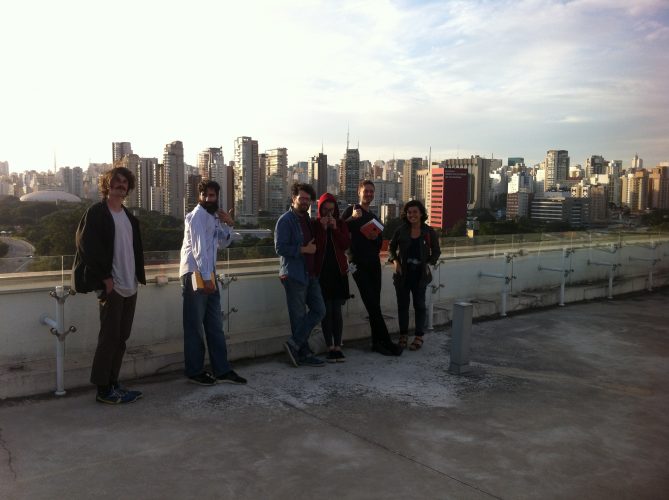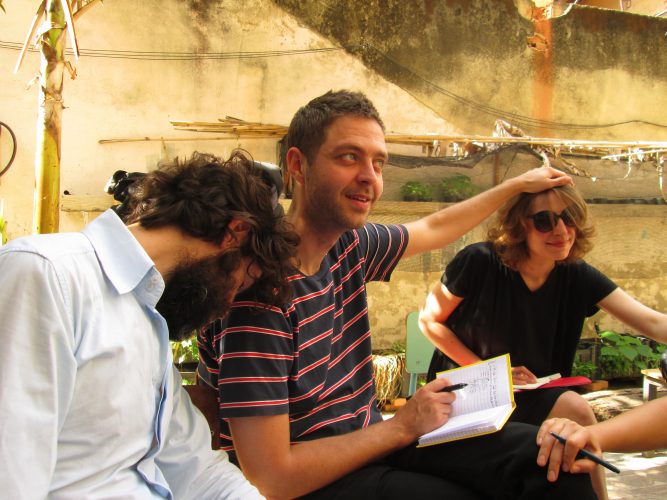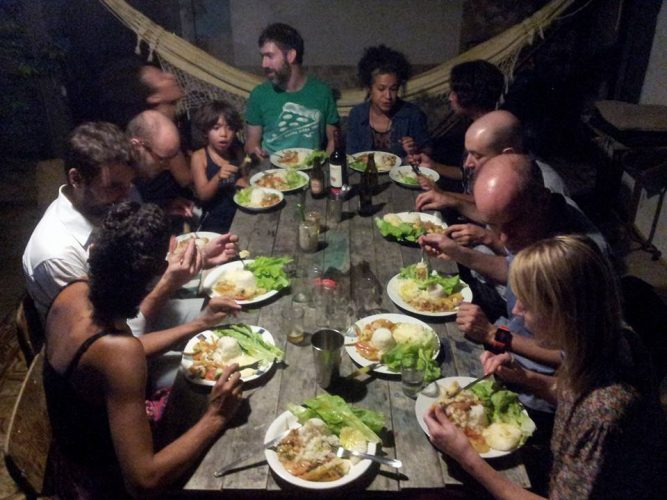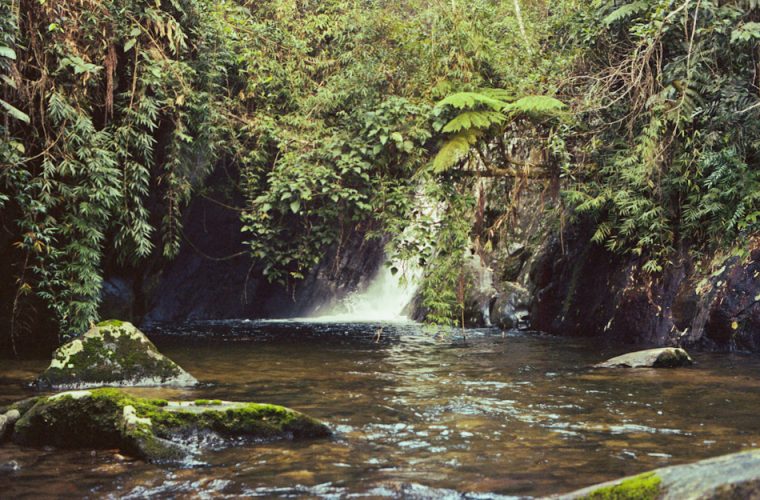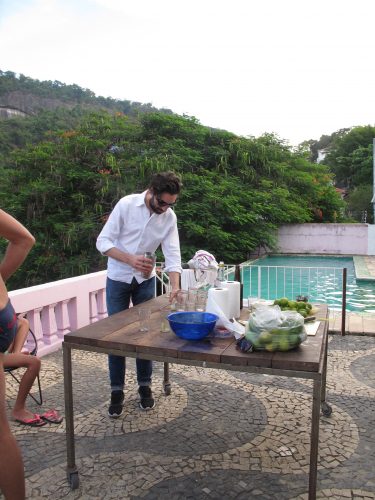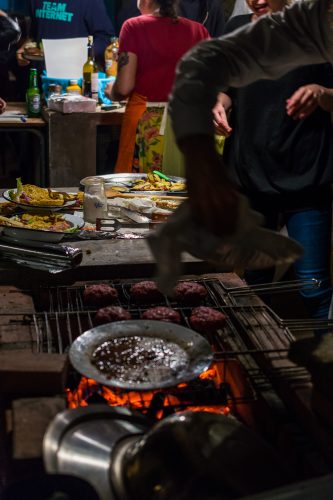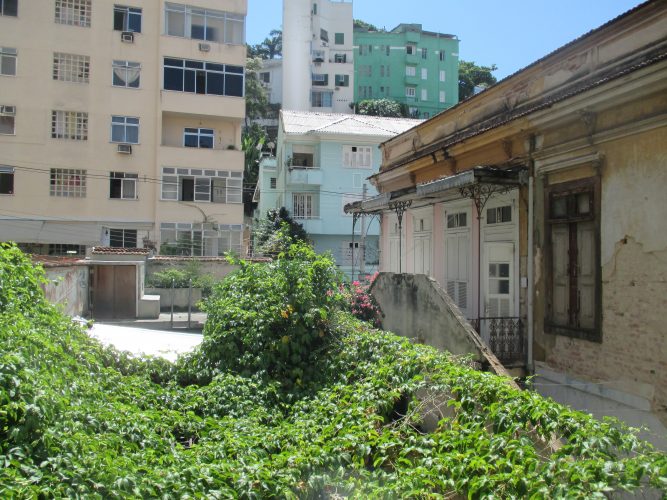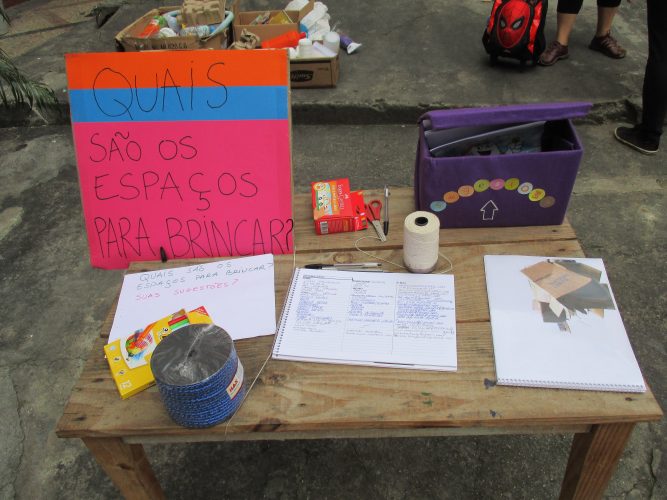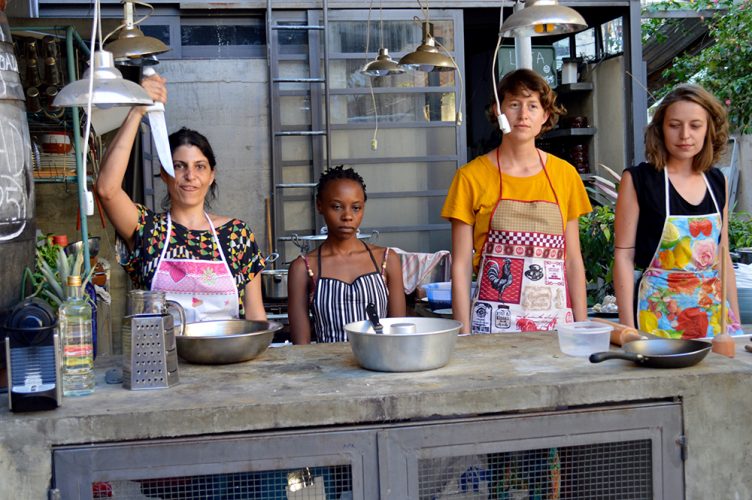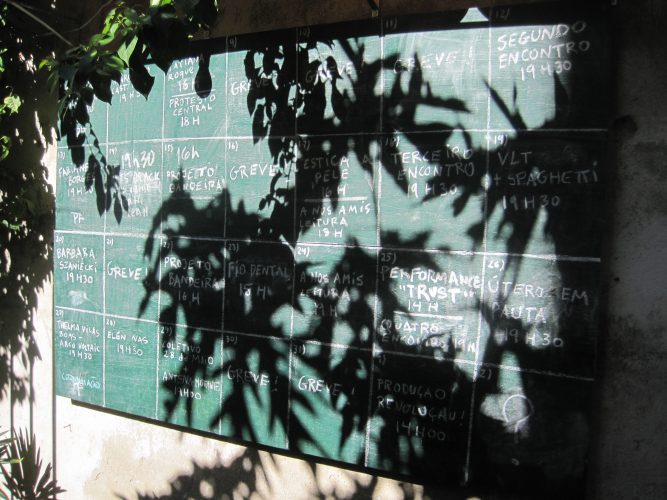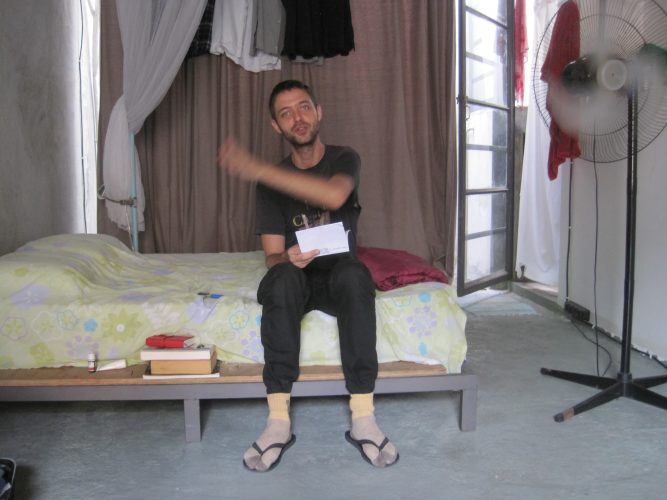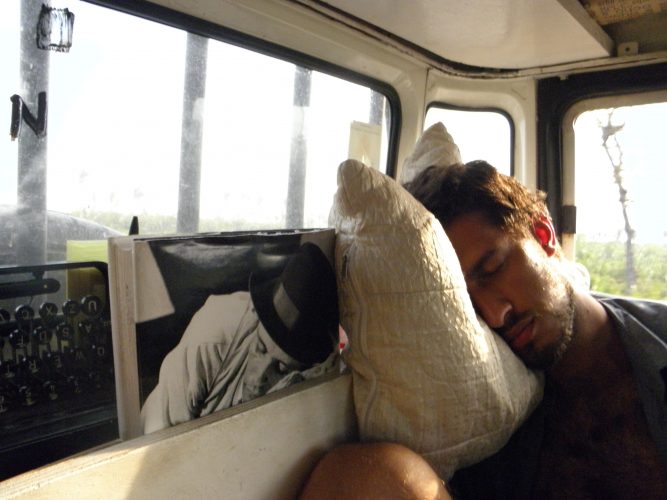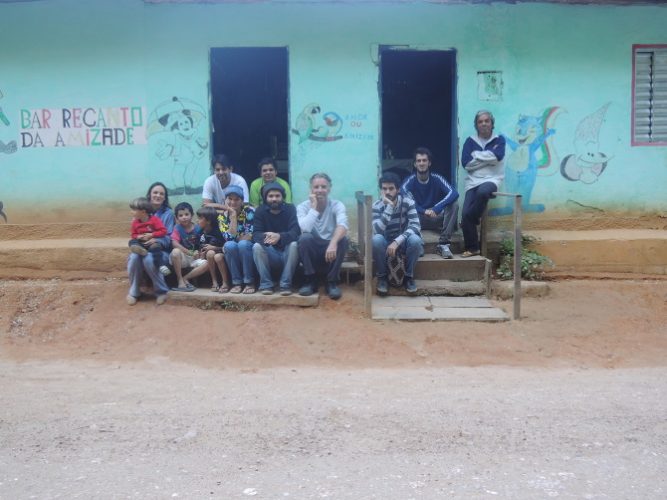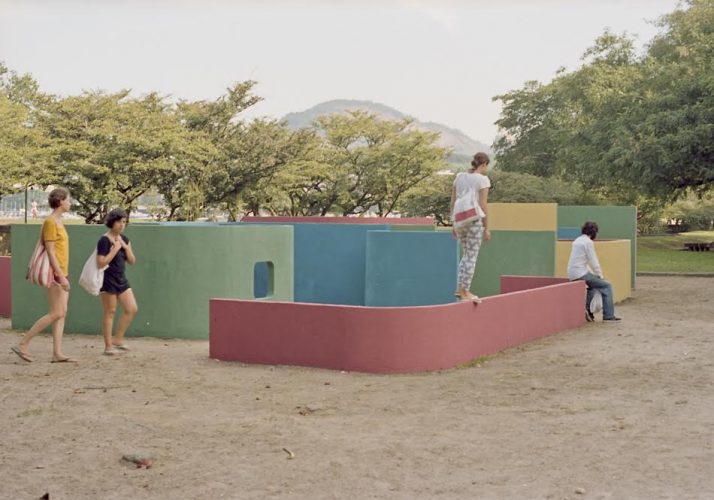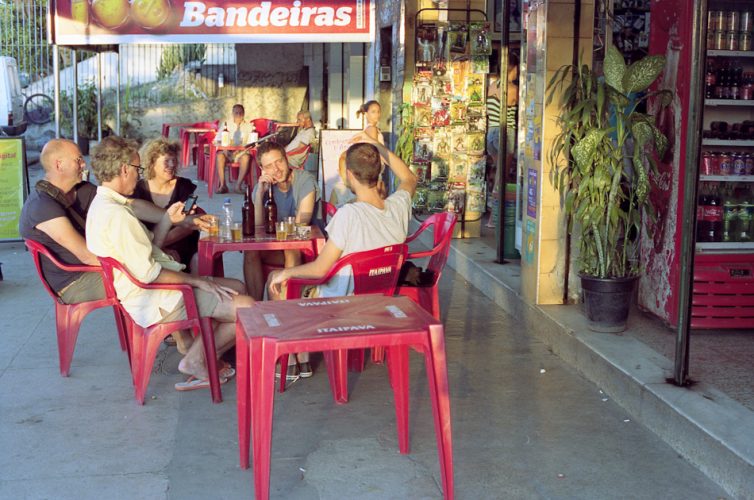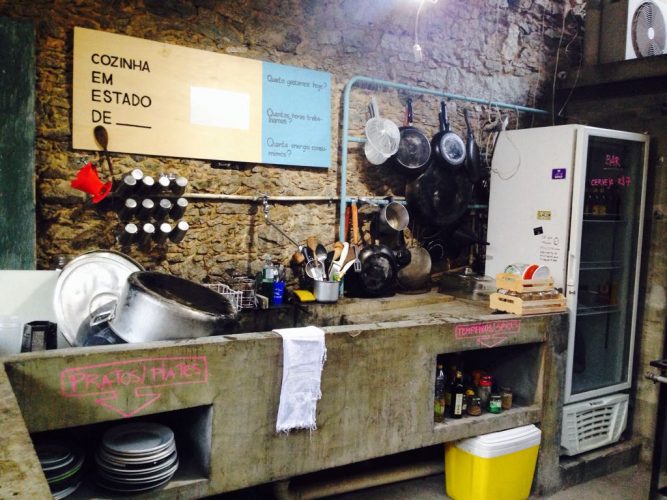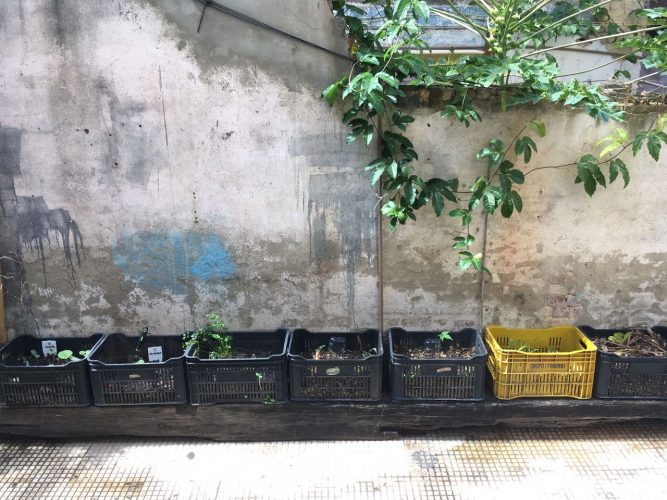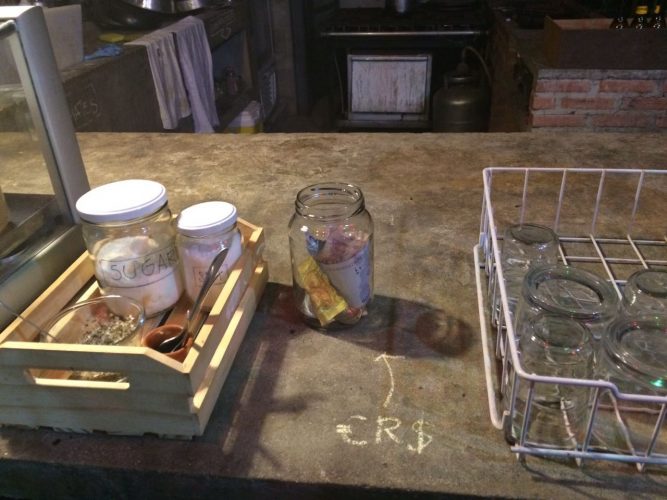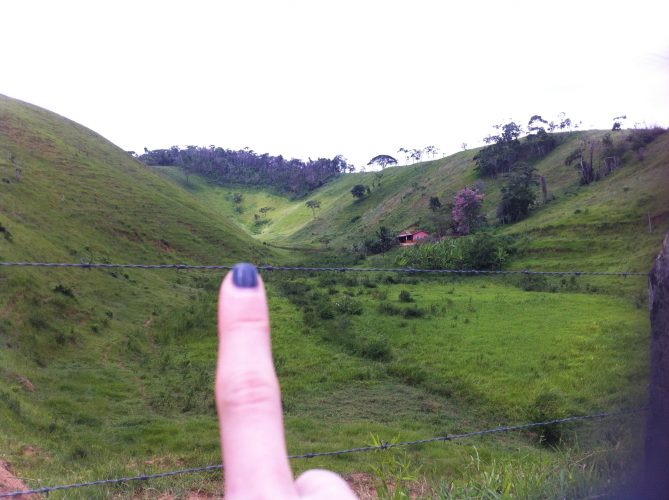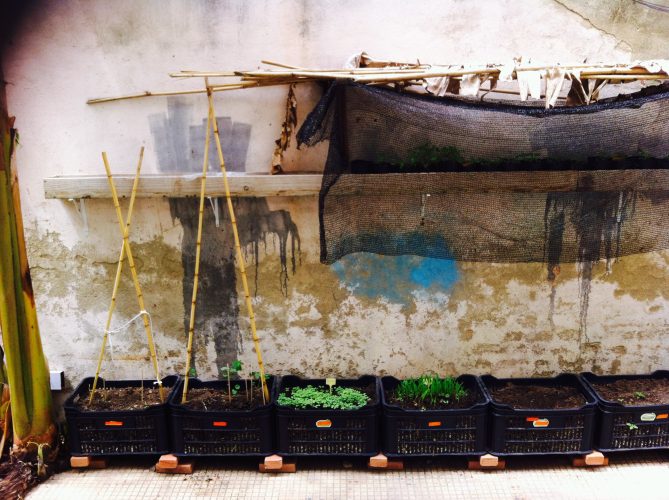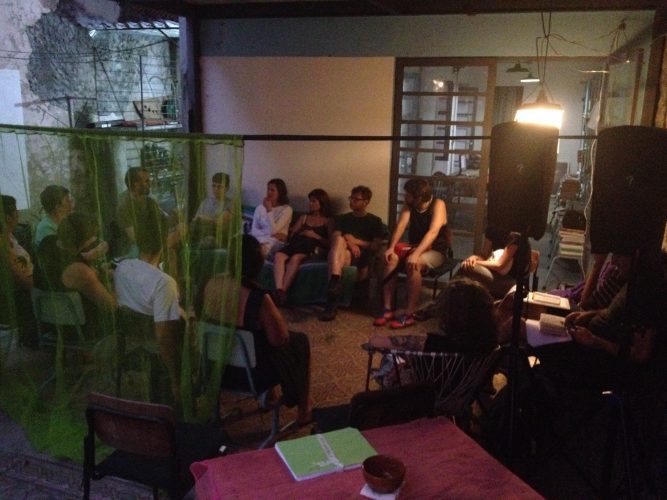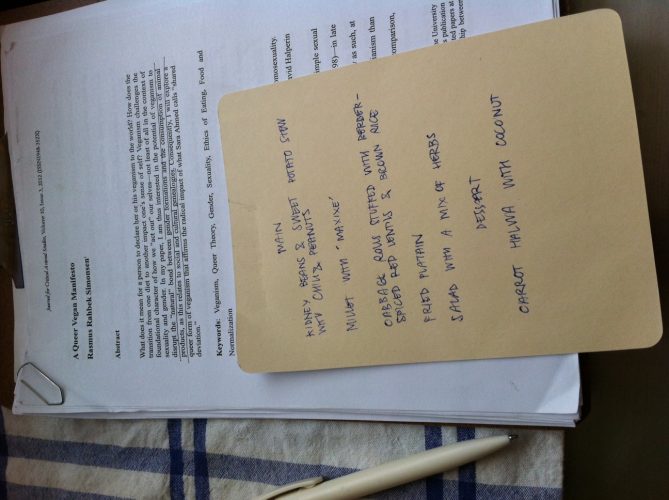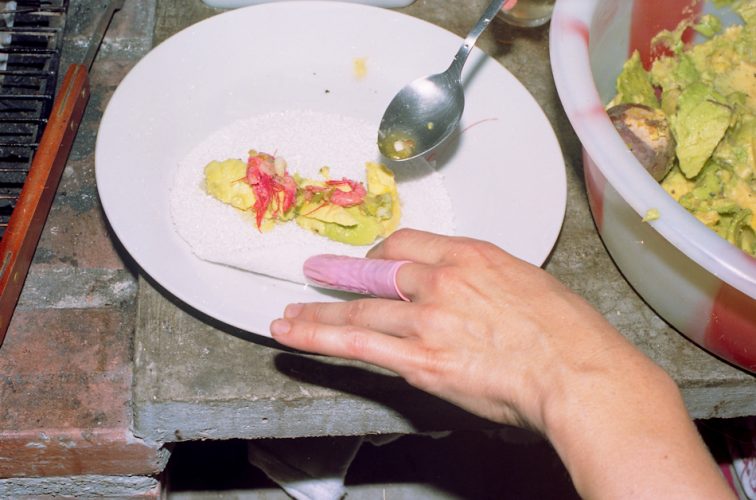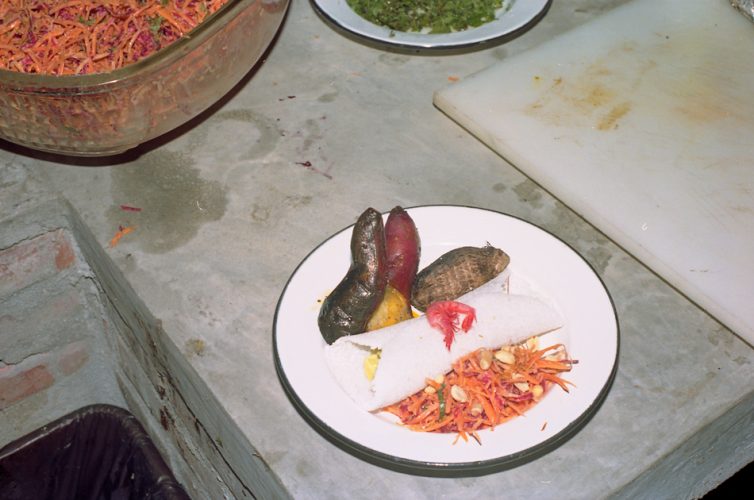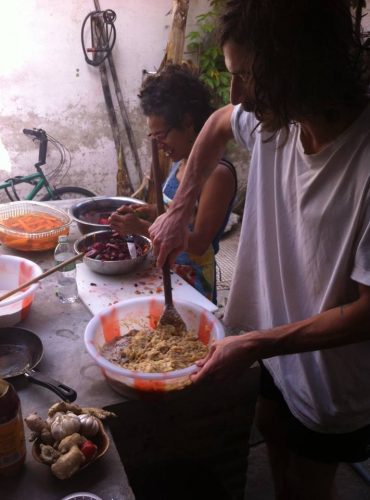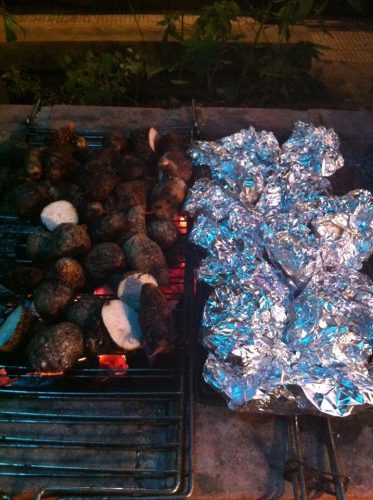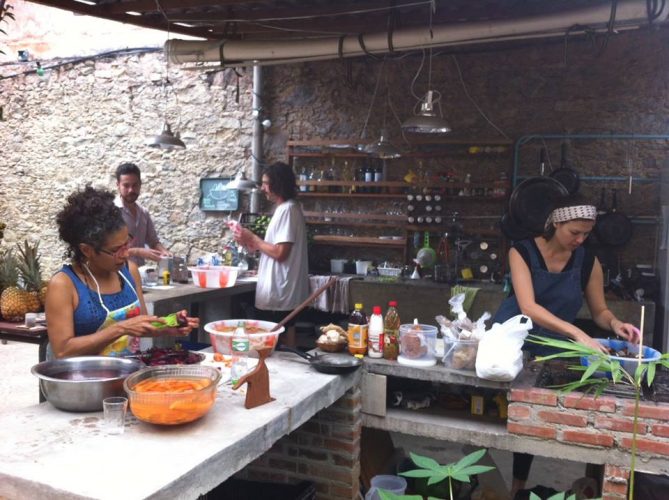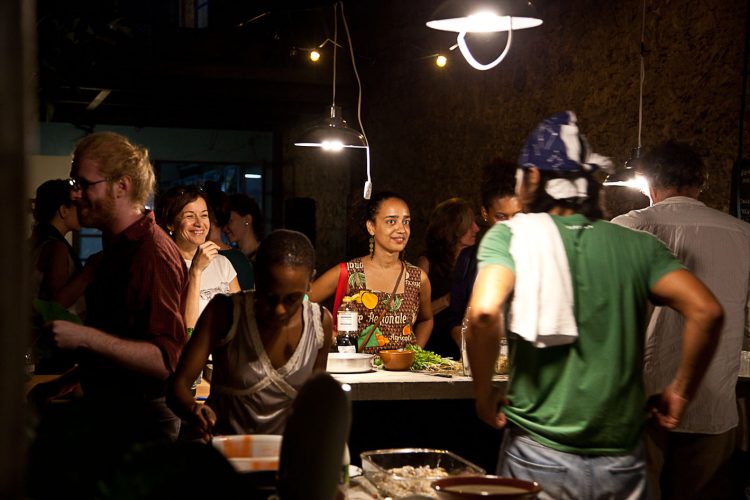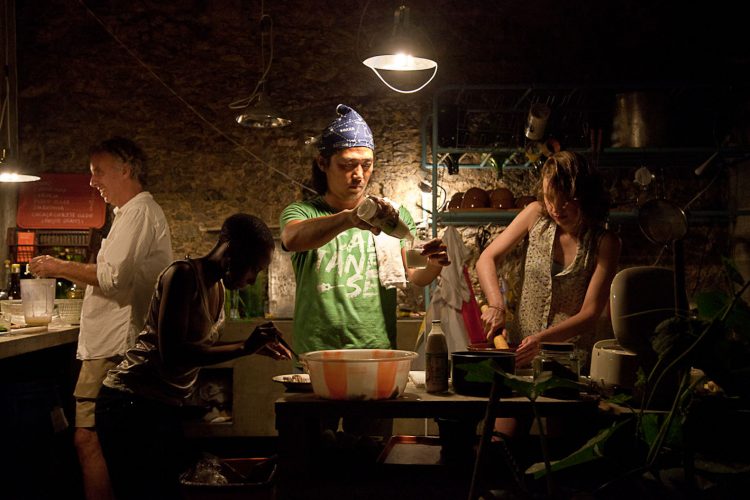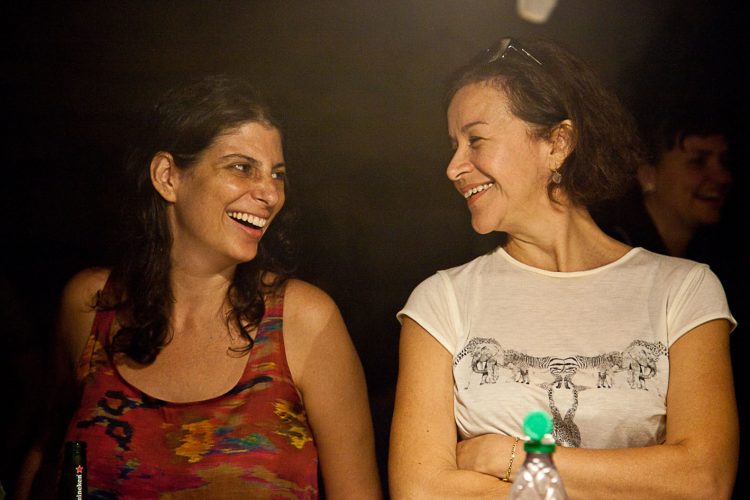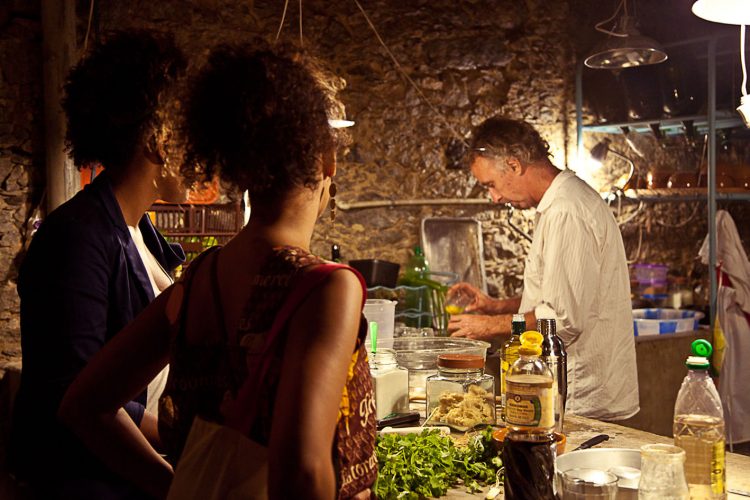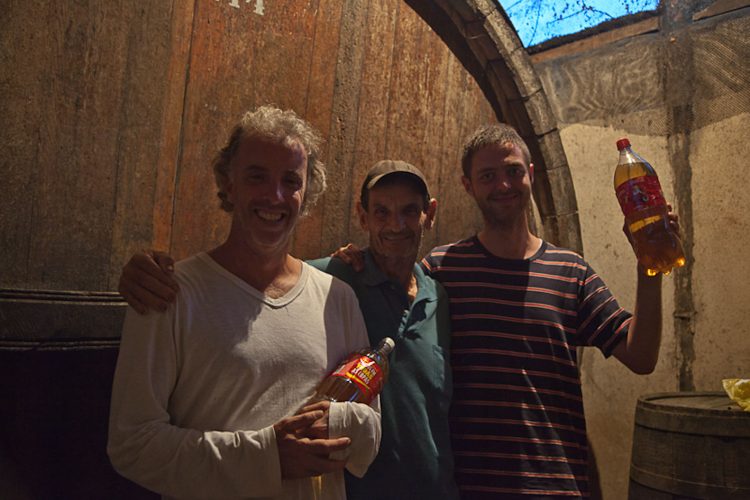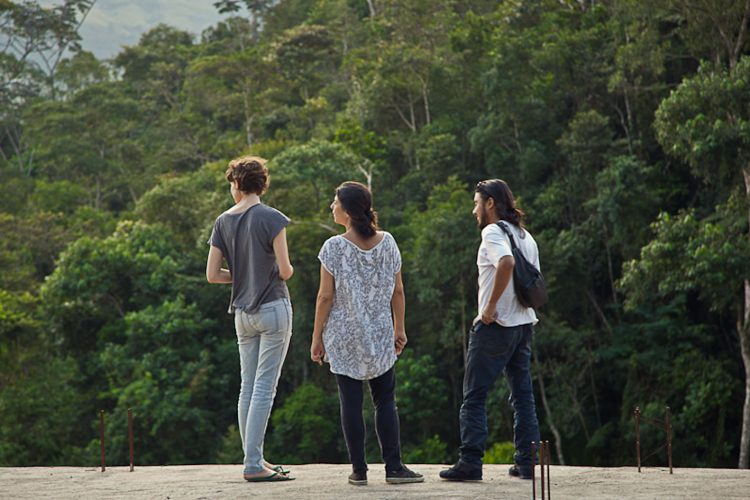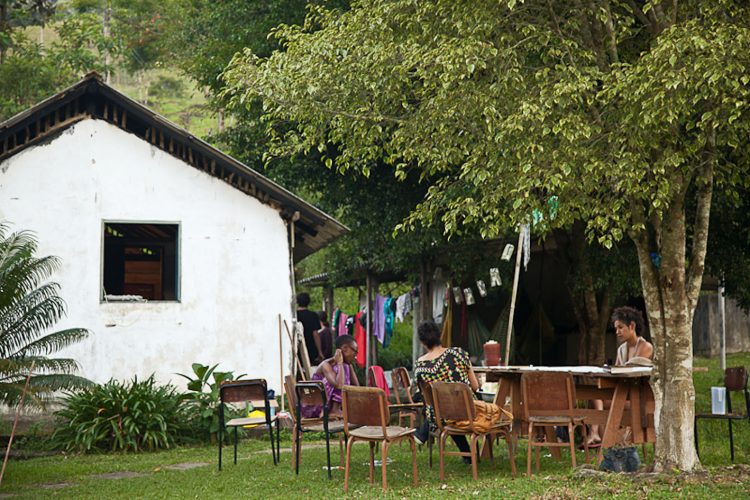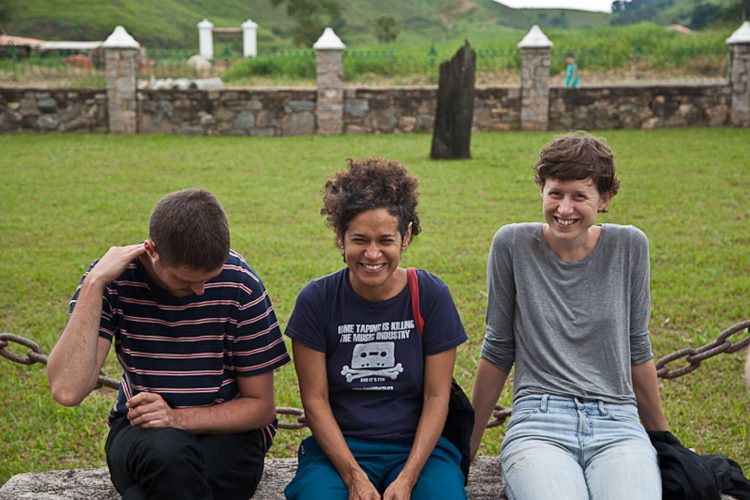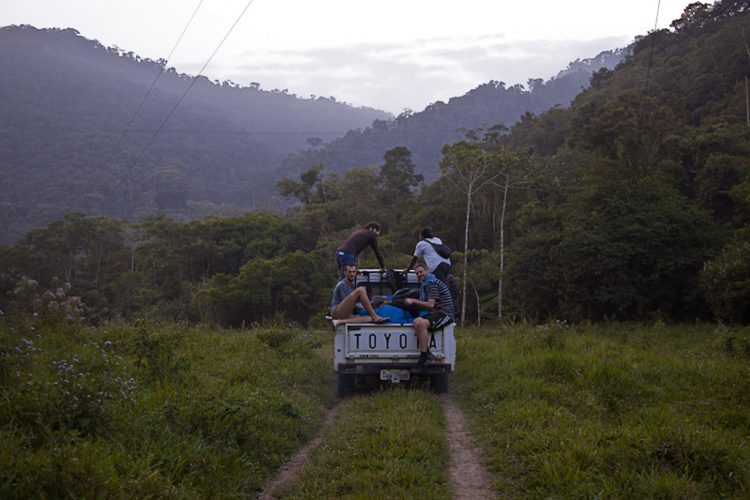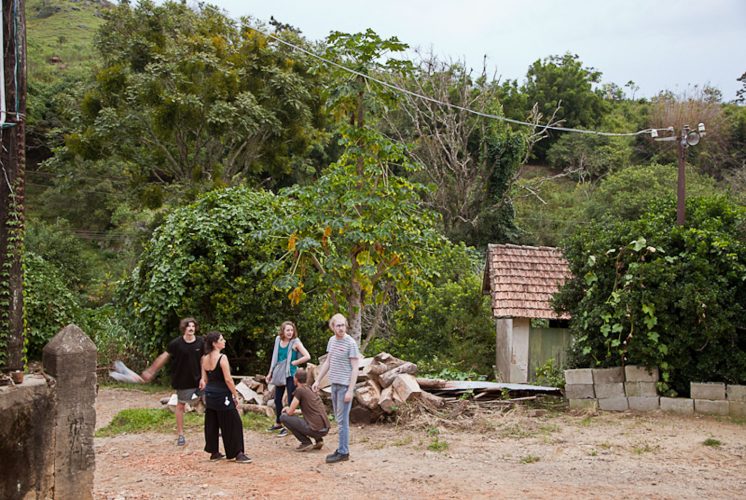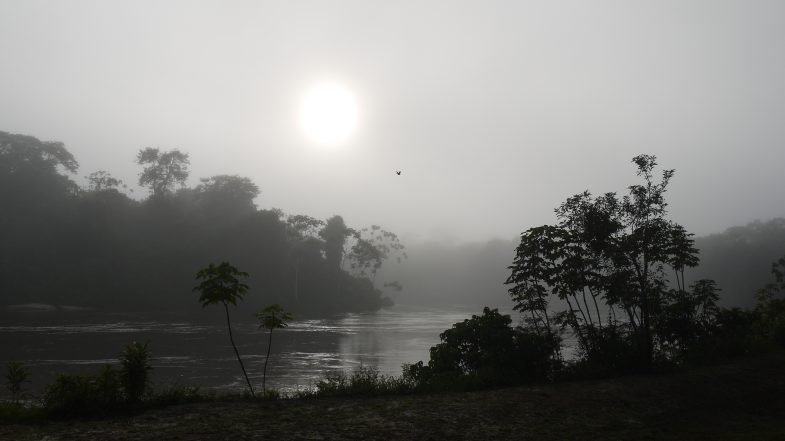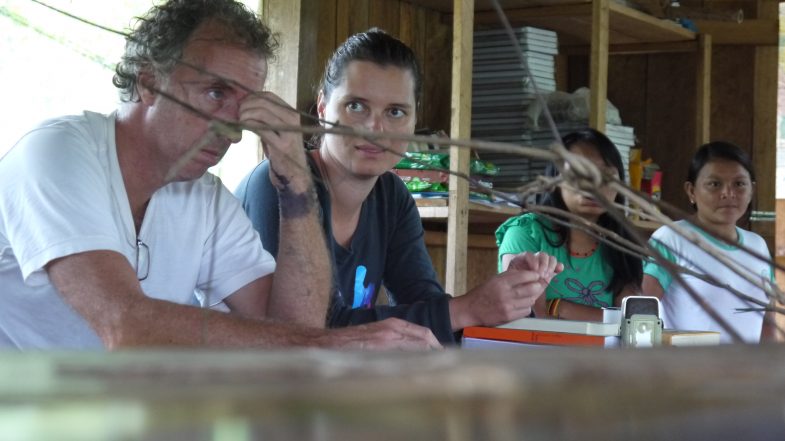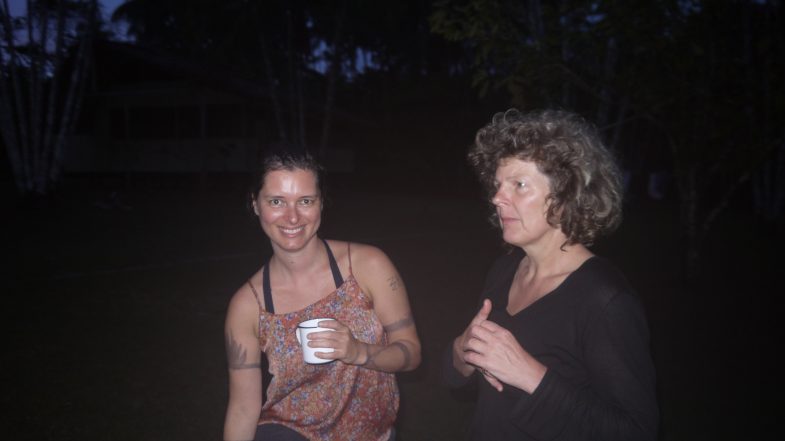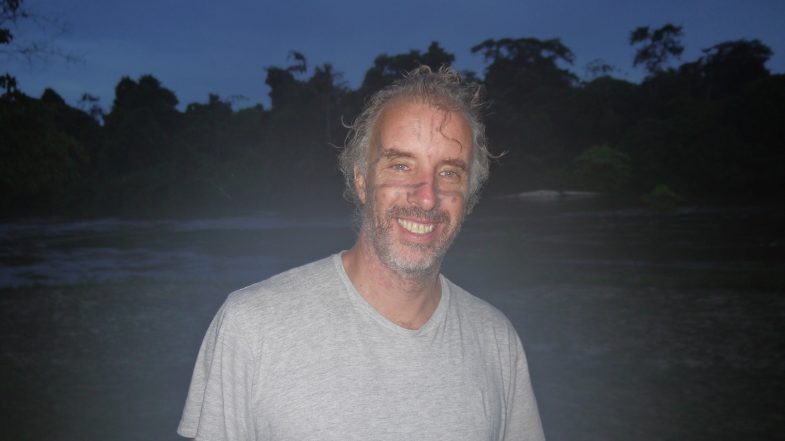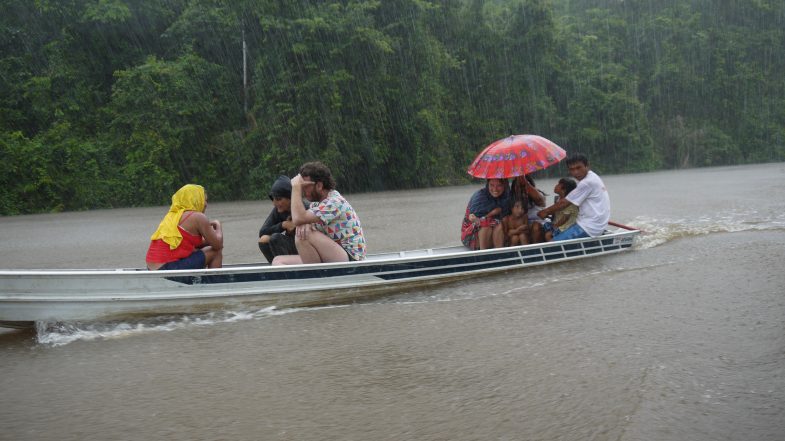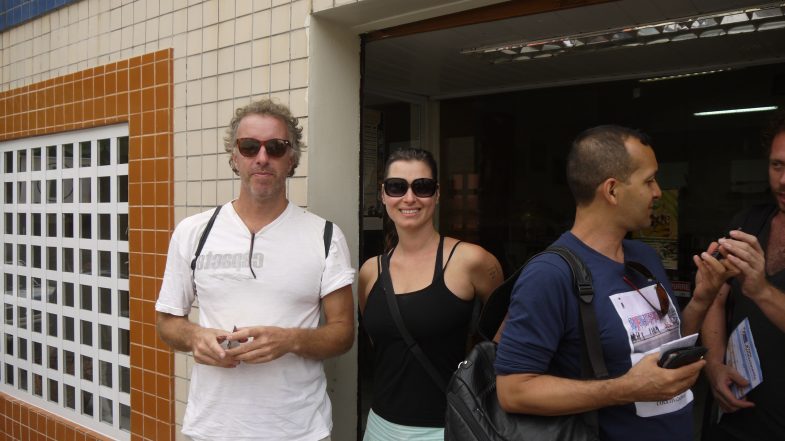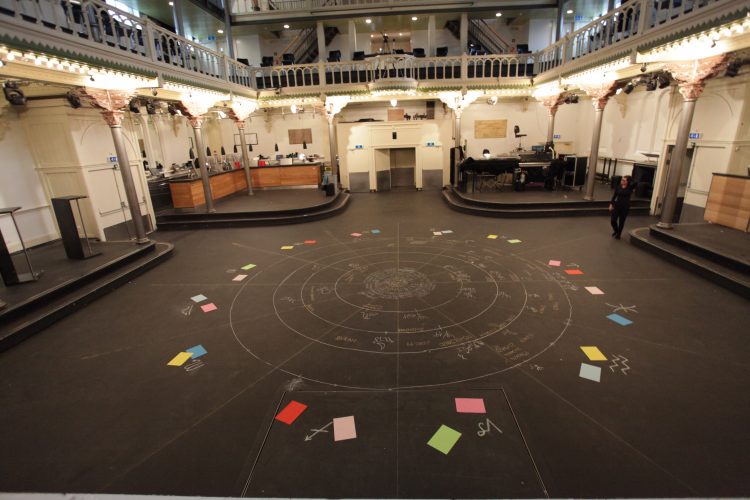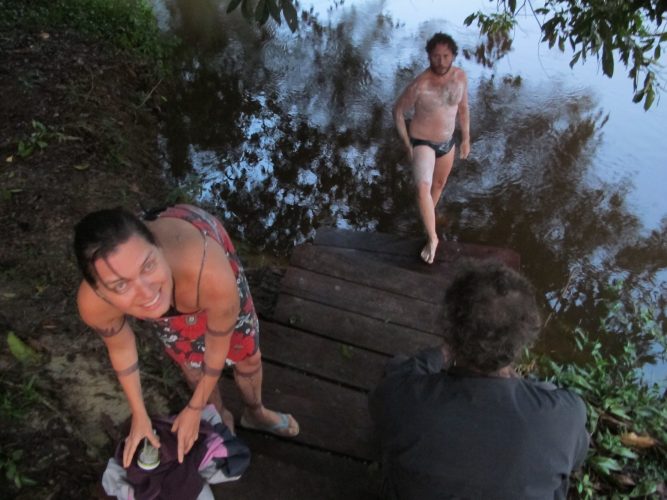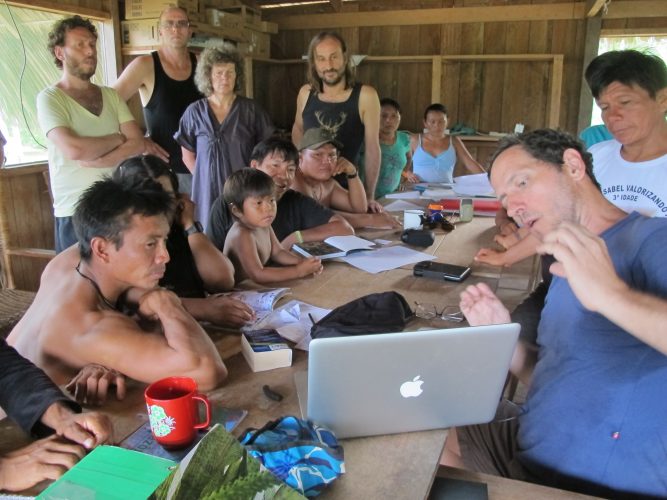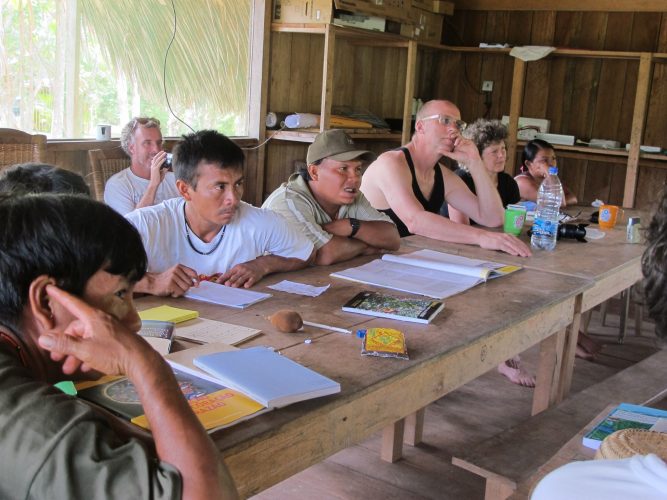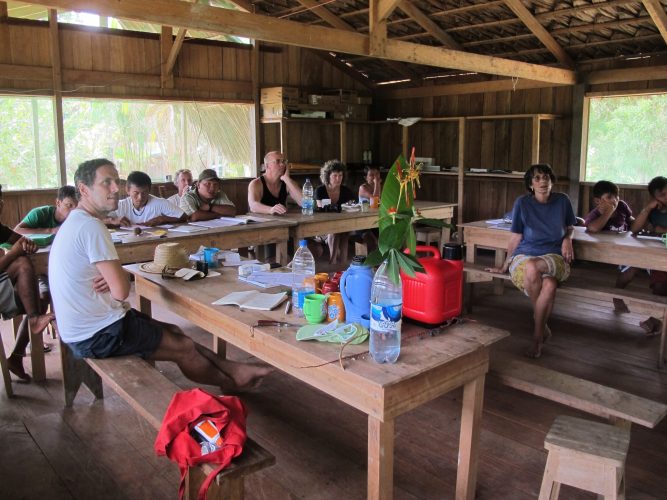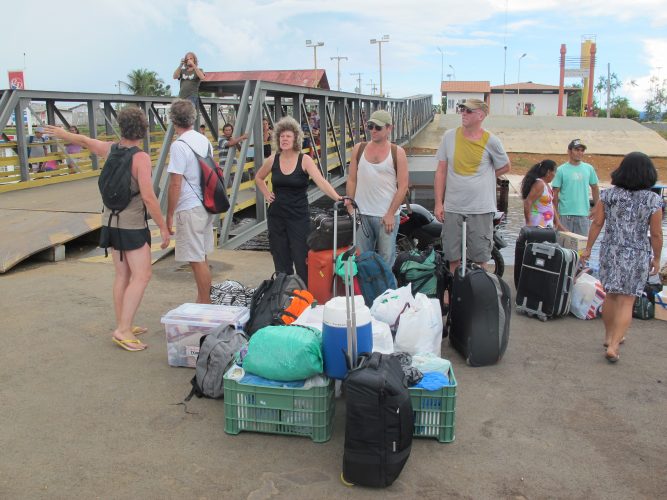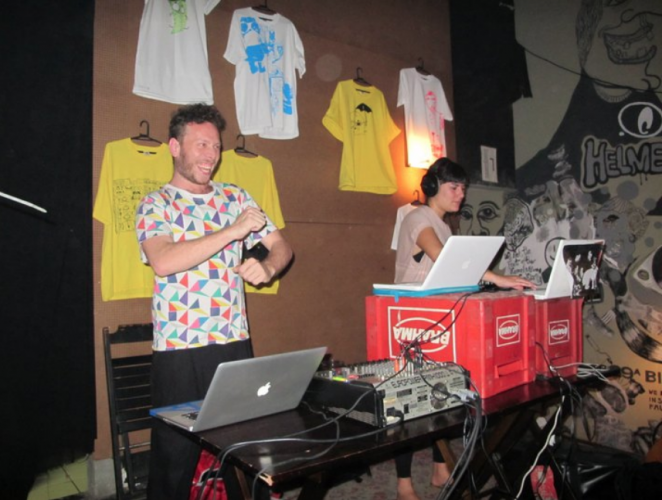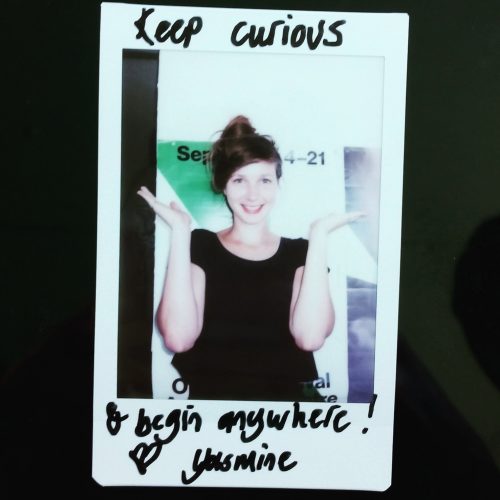 A pesquisadora / curadora Yasmine Ostendorf vem realizando pesquisas na Ásia e na
Europa sobre artistas que propõem formas alternativas de viver e trabalhar - formas
que acabam moldando sociedades e periferias mais sustentáveis, interconectadas e resilientes.
Ela trabalhou extensivamente em programas internacionais de mobilidade cultural e no tema da arte
e ecologia, tendo trabalhado para organizações especializadas como a Julie's Bicycle (Reino Unido),
Bamboo Curtain Studio (TW), Cape Farewell (Reino Unido) e Trans Artists (NL). Ela administra
a Green Art Lab Alliance, uma rede de 35 organizações culturais na Europa e Ásia que explora,
questiona e aborda nossa responsabilidade social e ambiental e é autora da série de guias
“Respostas criativas à sustentabilidade”, publicada pela Fundação Ásia-Europa (SG) e Instituto
Ecológico (DE). É curadora associada do Valley of the Possible (CL), do Centro de Arte
Contemporânea e do Mundo Natural (Reino Unido) e da C-Platform (CN). Desde 2017, é chefe do
Laboratório de Pesquisa da Natureza na Academia Jan van Eyck em Maastricht (NL) e iniciador do
Laboratório de Alimentos Van Eyck (2018); uma colocação de pesquisa para um artista / chef,
compreendendo os alimentos à luz dos atuais desenvolvimentos ecológicos, sociais e políticos.
Ela tem organizado Festivais de Cinema de Arte em Alimentos, colecionando, apresentando e
comemorando práticas inspiradoras de arte / comida de todo o mundo e organizando Grupos de
Leitura regulares para reunir teoria e prática. Ela tenta escrever um blog mensal
para www.artistsandclimatechange.com.
Pesquisa
Meu plano inicial era gastar meu tempo expandindo parcerias para a Green Art Lab Alliance
na América Latina; conectando pontos, redistribuindo recursos e organizando trocas e assim por
diante. Logo descobri que, acima de tudo, Capacete é uma oportunidade pessoal para desfrutar
de uma segunda educação; uma chance de dissecar e revisar cuidadosamente as perspectivas
eurocêntricas e expandir minha estrutura teórica e cultural de maneiras anticoloniais e anti-racistas.
Mais do que tudo, meu 'projeto' aqui é ouvir, absorver e internalizar. E mais do que tratar de um
assunto, tornou-se o reconhecimento de sistemas e estruturas subjacentes e a curadoria de
metodologias alternativas de acordo.
**A residência de Yasmine Ostendorf é possível com o apoio da Mondriaan Fonds
(https://www.mondriaanfonds.nl/)
A pesquisadora / curadora Yasmine Ostendorf vem realizando pesquisas na Ásia e na
Europa sobre artistas que propõem formas alternativas de viver e trabalhar - formas
que acabam moldando sociedades e periferias mais sustentáveis, interconectadas e resilientes.
Ela trabalhou extensivamente em programas internacionais de mobilidade cultural e no tema da arte
e ecologia, tendo trabalhado para organizações especializadas como a Julie's Bicycle (Reino Unido),
Bamboo Curtain Studio (TW), Cape Farewell (Reino Unido) e Trans Artists (NL). Ela administra
a Green Art Lab Alliance, uma rede de 35 organizações culturais na Europa e Ásia que explora,
questiona e aborda nossa responsabilidade social e ambiental e é autora da série de guias
“Respostas criativas à sustentabilidade”, publicada pela Fundação Ásia-Europa (SG) e Instituto
Ecológico (DE). É curadora associada do Valley of the Possible (CL), do Centro de Arte
Contemporânea e do Mundo Natural (Reino Unido) e da C-Platform (CN). Desde 2017, é chefe do
Laboratório de Pesquisa da Natureza na Academia Jan van Eyck em Maastricht (NL) e iniciador do
Laboratório de Alimentos Van Eyck (2018); uma colocação de pesquisa para um artista / chef,
compreendendo os alimentos à luz dos atuais desenvolvimentos ecológicos, sociais e políticos.
Ela tem organizado Festivais de Cinema de Arte em Alimentos, colecionando, apresentando e
comemorando práticas inspiradoras de arte / comida de todo o mundo e organizando Grupos de
Leitura regulares para reunir teoria e prática. Ela tenta escrever um blog mensal
para www.artistsandclimatechange.com.
Pesquisa
Meu plano inicial era gastar meu tempo expandindo parcerias para a Green Art Lab Alliance
na América Latina; conectando pontos, redistribuindo recursos e organizando trocas e assim por
diante. Logo descobri que, acima de tudo, Capacete é uma oportunidade pessoal para desfrutar
de uma segunda educação; uma chance de dissecar e revisar cuidadosamente as perspectivas
eurocêntricas e expandir minha estrutura teórica e cultural de maneiras anticoloniais e anti-racistas.
Mais do que tudo, meu 'projeto' aqui é ouvir, absorver e internalizar. E mais do que tratar de um
assunto, tornou-se o reconhecimento de sistemas e estruturas subjacentes e a curadoria de
metodologias alternativas de acordo.
**A residência de Yasmine Ostendorf é possível com o apoio da Mondriaan Fonds
(https://www.mondriaanfonds.nl/)
20 anos CAPACETE
Dia 7 de dezembro às 19h
Lançamento dos livros:
+ 20 anos CAPACETE
+ 10 anos Galeria Metropolitiana (Chile)
+ Lugar a Dudas (Colombia)
Com apresentações dos espaços de arte:
• Lugar a Dudas – Victor Albarracín – Cali
• Galeria Metropolitana – Luis e Ana – Santiago
• Casa do Povo – Marilia Loureiro – SP
• Casa Mario – Sebastian Alonso – Montevideo
• Despina – Guilherme Altmayer – RJ
• CAPACETE – Camilla Rocha Campos, Tanja Baudoin e Helmut Batista – RJ
!!!!!!!! LANÇAMENTO DO NOVO PROGRAMA DE 1 ANO DO CAPACETE (2019/2020) !!!!!!!
** na cozinha Tesuo Hida cozinhando Maguro Zuke Don (RS 13.99)
Para baixar o livro CAPACETE clique no link abaixo:
Livro dos 20 anos do CAPACETE
Nikos Doulos
“Experiencing connecting issues“- CAPACETE Athens 2017
…..
Nikos Doulos is a visual artist, curator, and co-director of Expodium in Utrecht (NL) – an ‘urban do tank’ that utilizes artistic means to address urban challenges and the ever-changing nature of cities.
Doulos interests lie with the investigation of pedagogical modes for inclusive knowledge production framed under site-specific research trajectories and temporal interventions. In his work, he creates malleable situations/conditions as participatory infrastructures and ‘soft’ knowledge generators.
Walking holds a predominant part in his practice.
He is the founder of NIGHTWALKERS – a participatory nocturnal walking project investigating the contemporary identity of the flanêur, performed in (among others) the Netherlands, Serbia, Sweden, Italy, Hungary, South Korea and Greece
He has presented collaborative projects at the Trafó House of Contemporary Arts (Budapest), Bildmuseet (Umeå), participated at the Impakt Festival (Utrecht), the Athens Biennale: #4 AGORA and the 53rd October Salon and has lead workshops for UNIDEE – Cittadelartte Pistoletto Foundation and the University of the Arts, Uniarts Helsinki. In 2017 he participated at Capacete Athens – a nine-month residency in Athens under the broader framework of Documenta 14.
Doulos is a co-curator of the Unmaking The Netherlands program initiated by Expodium and a co-editor of the Unmaking or How To Rethink Urban Narratives publication.
Since 2016, he holds a position at the DAI ROAMING ACADEMY as the Senior Coordinator of Planetary Campus.
|
NIGHTWALKERS WERKSPOOR 2018: THE EXISTING, THE PROBABLE AND THE POSSIBLE. New monthly Nightwalkers sessions in Utrecht’s Werkspoorkwartier are announced on our facebook page!
|
Michelle Mattiuzzi
Jota Mombaça
Gris García
[gview file=”http://capacete.org/wp-content/uploads/2017/04/7.-Garcia-García-documenta-has-nothing-for-you.pdf”]
Artista y curadora independiente. Su trabajo está centrado en las prácticas contemporáneas y en aquellas producciones híbridas que se generan a partir del diálogo y las correspondencias con el otro.
“Eliana y nuestras habitaciones. Jari y la vida de barrio. Raúl y los desayunos. Gian y sus pancitos. Rodrigo y el silencio. Fabiana y su voz. Sol, Michelle y las discusiones. Jota y su ternura radical. Nikos y las caminatas. Vasiliki y las sorpresas. Helmut y sus havaianas. Aún van conmigo.”
Jari Malta
Jari Malta (Montevideo, Uruguay) estudió filosofía y literatura comparada en Barcelona, así como el Programa de Estudios Independientes del MACBA. Vive, escribe y habla por Skype con sus amigxs en Malmö.
“En 1998, cuando arrancó Capacete, yo tenía 13 años y el pelo teñido de azul. También en el 98 tuve sexo por vez primera y salieron algunos de mis discos favoritos, como The Shape of Punk to Come o Goddamnit.
Hablar en pretérito de lo que supuso la experiencia en Atenas se me hace más difícil: aún me cuesta creer que la plaza de Exarchia no quede a tres cuadras, o que me sea imposible juntarme con Gris para pasear a Gnaki y tomar un helado (ella, yo una Coca-Cola).”
[ess_grid alias=”Galeria de foto” layers='{“custom-image”:{“00″:”5247″,”01″:”5249″,”02″:”5245″,”03″:”5235″,”04″:”5239″,”05″:”5237″,”06″:”5233",”07″:”5241″,”08″:”5251″},”custom-type”:{“00”:”image",”01″:”image”,”02″:”image”,”03″:”image",”04″:”image”,”05″:”image”,”06":”image”,”07″:”image”,”08″:”image”},”use-skin”:{"00″:”-1″,”01″:”-1″,”02″:”-1",”03":”-1″,”04″:”-1″,”05″:”-1″,”06″:"-1″,”07″:”-1″,”08″:”-1″}}';][/ess_grid]
Rodrigo Andreolli
Carta a minha amiga:
“…Esta residência aqui gera um espaço de transição e reorganização interna, é uma continuidade do exercício da presença colaborativa e curiosa, experimentando estruturas de trabalho, de vida. Essa experiência também coloca em perspectiva minha trajetória, meu corpo, minhas práticas e torna palpável as reverberações que me trouxeram até aqui. Estou tentando aprender a direcionar minha atenção para olhar mais de perto quais questões me impulsionam a ação, que gestos eu coloco ou quero colocar no mundo e o que resulta desta interação. Tenho vontade de dançar, acho que quando danço alguma coisa acontece. Mas sinto que na maior parte das vezes essa coisa de criar peça/espetáculo mata a dança. Então como dançar e manter a dança viva nesse esquemão do mundo da arte? Talvez fora dele. Como fazer do corpo o instrumento de transformação do pensamento morto? Como manter-se vibrando os ecos de um campo de criação coletiva, comunicação que atravessa estruturas obsoletas, que traspassa tudo, que liga tudo? + Ontem olhei a lua formando um caminho no mar e percebi a concretude desse coisa que é a lua. E como não dá pra viver neste mundo sem olhar pra ela, sem saber dela e sem sentir seu movimento, que influencia tudo aqui. Ela fica lá olhando pra gente o tempo todo e se aproxima e se distancia, tudo muda por conta desta relação. Tudo no mundo é assim. A lua é um destes elementos. Ficou forte pra mim também essa relação da lua, das divindades pagãs, das manifestações divinas no que é concreto. A luz da lua fazia o caminho prata-dourado na superfície da água e também penetrava as ondas pra além da minha visão criando curvas de luz no escuro-azul do mar. Essa mesma luz tocava a terra e o meu corpo numa linha que cortava e ligava tudo ao mesmo tempo. E essa lua que baixava no horizonte, quase tocando o mar, naquele mesmo momento lançava seu corte sobre outras águas, terras e corpos. Pensei que aquela mesma luz que me tocava, toca também você aí. Deste lugar quero dançar. [no mar Egeu, entre Hydra e Pireos, em 08/maio/2017]” -
Vasiliki Sifostratoudaki
Vasiliki Sifostratoudaki suggests a practice between the object and the social engagement work. Understanding line not as a linear perspective which provides a limit but a juxtaposition of singular points whose variety in form creates a possibility of movement between them, a moving sculpture. Initiator of the Yellow Brick research project.
[ess_grid alias=”Galeria de foto” layers='{“custom-image”:{“00″:”3190″,”01″:”3186″,”02″:”3188″},”custom-type”:{“00″:”image”,”01″:”image”,”02″:"image”},”use-skin”:{“00″:”-1″,”01″:”-1″,"02″:”-1″},”title”:{“01”:”Killing our Darlings, Rodrigo Andreolli (Brazil) and Vasiliki Sifostratoudaki (Greece)”,”02″:”READING – WRTING -MAKING”}}’][/ess_grid]
Fabiana Faleiros
[gview file=”http://capacete.org/wp-content/uploads/2017/03/22.-Fabiana-Faleiros-pleasemyboss.pdf”]
Poeta, performer e pesquisadora. É doutoranda pelo Programa de Arte e Cultura da UERJ, Rio de Janeiro, e Lady Incentivo, cujo disco Lady Incentivo: novas formas de amar e gravar CD foi gravado na Mobile Radio BSP, durante a 30 Bienal de São Paulo. Entre 2015 e 2016 esteve em turnê com o Mastur Bar em Cuba (Fabrica de Arte Cubano, Havanna), Colômbia (Kuir Bogotá, International Festival for Queer Arts and Cinema), e também em cidades do Brasil como São Paulo, Porto Alegre e Belém do Pará. Em 2016 publicou o livro O pulso que cai e as tecnologias do toque, Ikrek: São Paulo. Atualmente participa da residência Capacete em colaboração com a Documenta 14 (Atenas, Kassel).
[ess_grid alias=”Galeria de foto” layers='{“custom-image”:{“00″:”3164″,”01″:”3166”,"02":”3170″,”03″:”3172″,”04″:”3176″;},"custom-type“:{“00″:”image”,”01″:”image”,”02":"image“,”03″:”image”,”04″:”image”},&;quot;use-skin“:{“00″:”-1″,”01″:”-1″,”02″:"-1″,”03″:”-1″,”04″:”-1″}}’][/ess_grid]
Gian Spina
Gian Spina was born in São Paulo (Brazil) and lived, studied and worked besides others in San Diego (USA), Vancouver (Canada), Bordeaux (France), Berlin and Frankfurt (Germany).
Today he writes, periodically to the to the World Policy Institute and Arts Everywhere. As well as a guest professor at the Art Academy of Palestine, in 2017 take part at art residence program organized by the Dokumenta 14.
—
“Fabiana, Jarí, Raul, Gris, Jota, Rodrigo, Sol, Michelle, Nikos, Vasiliki, Helmut e Eliana mudaram a minha vida:
e deixei pra trás uma série de seres que fui.
+ -
jota me deu um novo e um soco de leve seguido de afago ou semente.
era para não ter ido por causa do amor
não sabia que o jarí existia, perto de omonia eu chorei com ele e vi que incomodava o mundo
fiz yoga, vomitei, caí de bicicleta e pensei
em desistência disfarçada de compromisso.
pra que isso ?
a fumaça que entrava dentro do quarto do segundo andar e eu na cama com a fabiana enquanto evitávamos falar de dor e amor.
as aproximadas trezentas e quarenta e sete músicas que ela sabia de cor e cantava dia sim dia não. instituição otta, lembrava a namorada da minha ex.
que força; esqueço todas as palavras quando penso no que foi ela,
o que me fez ela. não sabia que existia.
cinco dias por semana e depois mais dois foi gris e calma, agora gostaria de estar com ela rindo.
o fazer nada, a calma no corpo, esse marasmo infantil e quase anacrônico.
vontade de não largar nada disso nunca, parar aqui agora, segura esse espaço e deixa o sono de lado,
me corte para lembrar que vi e viví e voltei.
havia o heroi, que me fez amor, chorei de novo, talvez a última do ano,
tentei matar o homem em mim e não deu
vaso, vaso e vasilika abarca novamente e me abraça
o chão não é o mais mesmo, nem as varandas, hot, pedia mais amor e carne, para ir e voltar.
enquanto eu caía, sistematicamente por vinte minutos com o rodrigo eu caía, e pedia, logo após
um pouco mais.”
Eliana Otta
Eliana Otta es una artista multidisciplinaria. A través del dibujo, escritura, video, instalaciones y proyectos participativos, ella asocia detalles simples de la vida cotidiana que pueden hablar de procesos complejos en contextos específicos, indagando cómo las subjetividades dan forma al espacio público al relacionar lo personal con lo político, así como recuerdos individuales y compartidos a preguntas sobre el presente y nuestros posibles deseos colectivos para el futuro. La desigualdad económica, el trabajo precario, la violencia de género y nuestra relación con la naturaleza en los sistemas extractivistas neoliberales son algunos de sus principales temas de interés.
+ Un día le dije a Helmut que me parecía que lo que más teníamos en común los seleccionados para esta experiencia era la ternura. Afinando la idea, quizá es que cada uno está buscando cómo defender las vulnerabilidades y la intensidad de los afectos en los contextos tan violentos, agresivos e injustos en los que nos movemos, buscando otros lugares a donde pertenecer o cómo hacer que aquellos a los que pertenecemos nos permitan ser. Luego de este año, una nueva certeza es que ahora tengo más cómplices para continuar con ese intento.” -
Ian Erickson-Kery
[gview file=”http://capacete.org/wp-content/uploads/2016/05/CAPACETE20ANOS-PAGINAS-ian.pdf”]
…
Ian Erickson-Kery is a PhD student at Duke University, where he researches and writes on Latin American art, literature, territorial conflicts, and geographical imaginaries. In recent years he has moved itinerantly between the north and the south, the art world and academia, and the city and the country, all of which shape the topography of his work. With equal fondness for Praça Tiradentes and Vale do Anhangabaú, he is nonpartisan in the Carioca-Paulista rivalry.
Aurélia Defrance
Caetano Maacumba
Soledad Leon
Coordinator of an collective art project called PIA Michelle http://pia-michelle.blogspot.cl/
Also collaborate with CRAC Valparaiso now and then http://www.cracvalparaiso.org/?lang=en
Thora Dolven Balke
Camilla Rocha Campos
[gview file=”http://capacete.org/wp-content/uploads/2016/04/CAPACETE20ANOS-PAGINAS-camilla.pdf”]
….
Artista, pesquisadora, ativista micro-política e auto-revolucionária. Como artista transita no campo de uma arte colaborativa na qual o público é convidado a participar de situações performáticas relacionando seu corpo à contextos poéticos carregados de um tipo de humor e crítica. Em janeiro de 2017 ao integrar o Programa Internacional de residência artística AiR Q21 no Museum Quartier em Viena, Áustria, ministrou o workshop “Silent images shout body policies” no espaço de arte Raum_D do Museum Quartier.
É atualmente diretora da residência artística internacional CAPACETE no Rio de Janeiro onde também par- ticipou do programa como artista em 2016, quando realizou em parceira com a artista e também residente Thora Dolven Balke a pesquisa aberta “Respira Conspira”.
Anna Bak
Anna Bak is a visual artist and curator/organizer. She works in different medias, primarily with installation. She took her Master in Fine Arts from The Funen Arts Academy in Denmark, with an supplementing exchange year with a Fulbright Scholarship, at Montana State University in Bozeman, Montana, USA.
Sojin Chun
Chun’s practice includes creating works in video and installation. Using a whimsical and humorous approach, her work explores local narratives to examine the intersections and contradictions found in cultural, social and personal identities as a result of geographic relocation, and cultural multiplicity. Chun’s personal experience living in the Korean diaspora in Bolivia, and Canada, informs her work which reveals the idiosyncrasies found in culture, in its inconclusive and contradictory nature.
+ Through contemporary art, invited artists shared their work informed by personal research and collected images, news items, and raw materials, which expand beyond traditional notions of archives and institutionalized documents that are categorized by hegemonic political powers. At Capacete, we brought together artists from Chile, Costa Rica, Argentina, Canada, and Brazil in dialogue by sharing their individual projects looking at the ways in which artists subvert or give new meanings to the colonial construction of history. Through personal or historical imagery, artists told alternate histories from the perspective of those that are often unaccounted for in mainstream versions of history. This first event Arquivos de Resistencia took the form of a week-long residency for invited artists, a video screening of their works as well as artist talks and group dynamic activities. The group was further expanded through the participation of representatives from an activist group from the community of Horto whom invited the group for a tour of this community facing eviction and rapid gentrification of bicentenial residents, workers of the city’s Botanical Gardens. Participating artists in this project were: Marton Robinson (Costa Rica) who gave an in-depth historical context of Limon, Costa Rica in line with the narrative of Jamaican-descendents who were brought to Costa Rica as labourers and the rise of Marcus Garvey’s activism; Araya-Carrion, a Chilean collective that works with material archives to demonstrate the layers within the history of Colonization of Indigenous populations in the south of Chile; Cecilia Estalles, a queer Argentian artist who has been digitizing the first Trans archives collecting stories of Trans women who faced police brutality in the 1980s; and Canadian artist Joyce Wieland’s work that showed solidarity for left leaning artists and political activists. These artists were brought together by Capacete resident artist soJin Chun. Other residents that collaborated in this project were, Kadija de Paula, Ian Erickson-Kery, and Soledad Leon. -
Kadija de Paula
After fleeing the second English empire of the North Kadija traveled the former Spanish South until a warm autumn afternoon when she arrived in the land of the rising sun. Still in the transfer bus from Narita to Shibuya she met a man wearing a helmet. They talked about Eastern Europe and Latin America and discovered they were neighbors in Rio. Back in the tropics she went to his house for Universidade de Verão where she met the other 12 who later became the 13 of Pereira, also known as Agência Transitiva. Under the maracujá tree they evoked Mané Pelado, Cara de Cavalo and became epiphyte to the helmet hanging in the bookshop of Pequeno Laboratório. She started going by Agent Orange and made crosswords with Vocabulário Político para Processos Estéticos. In the kitchen she made merendas and oferendas: tamales for Portas, bolinho de Feijoada e Feminismo with Andrea, kimchi with soJin, and Queer Vegan Manifesto with Asia. When the helmet was not there she took over the house with the others from Capacetando and started making her PFs. Then came the coup and the new ones, hungry and thirsty for wednesday nights. She became resident chef. Then there was Futuros Sequestrados vs. Anti-sequestros dos Sonhos; DUB Janta E NOIS E Juice; Oficinas de Ajeum; Transburger; Nabo Laser; Opposite Kitchen; Confraria do Mungunzá; Daal do Sadhu Amar Bharati; Respira Lanches; Engastração Vegana; and much more… One day she had to move to another place, but she wouldn’t be where she is now if it wasn’t for that helmet.
Tali Serruya
Trained at the National Conservatory of Dramatic Art in the city of Paris and at the Geneva School of Art and Design, I thwart the codes of classical dramaturgy to create performative forms that question the plasticity of performance .
Currently is doing a two year residency (2017-2019) at Hangar in Barcelona (SP) https://hangar.org .Also is working for the Centre Dramatique National de Besançon, Université de Franche-Comté and at La Comédie de Reims.
Jonas Lund
Jonas Lund is a Swedish artist that creates paintings, sculpture, photography, websites and performances that critically reflects on contemporary networked systems and power structures of control.
Julia Retz
Tanja Baudoin
[gview file=”http://capacete.org/wp-content/uploads/2018/11/CAPACETE20ANOS-PAGINAS-tanja.pdf”]
….
Refilwe Nkomo
Giseli Vasconcelos
Giseli é produtora cultural e artista interdisciplinar, brasileira, residente nos Estados Unidos. Desenvolve festivais, workshops, exibições e publicações que discutem mídias e tecnologias relacionadas ao cenário brasileiro de arte e ativismo. Seus projetos se caracterizam pela junção de redes colaborativas que se destacam por práticas de mídias táticas e pedagogias radicais relacionadas à cultura de internet. Seus projetos já foram apresentados em Quito (LabSurLab), Amsterdam (N5M), Nova Delhi (Sarai), Viena (MQ21), Berlim (Radical Networks), São Paulo (31st Biennial of São Paulo, Sesc Pompeia), Rio de Janeiro (Capacete, Lastro).
Giseli is a cultural worker and interdisciplinary artist from Brazil based in US. She has been organizing festivals, workshops, exhibitions and publications that discuss media and technology related to the Brazilian scene of art and activism. Most of the projects are collaborative process that highlights practices on tactical media and radical pedagogies related to internet culture. Her work has already been presented in Quito (LabSurLab), Amsterdam (N5M), New Delhi (Sarai), Vienna (MQ21), Berlin (Radical Networks), São Paulo (31st Biennial of São Paulo, Sesc Pompeia), Rio de Janeiro (Capacete, Lastro).
“No retorno ao Brasil, Capacete foi o espaço e agenciamento importante para revisitar minha rede de trabalho, e também para estabelecer novos contatos e aproximação artistas, pensadores e curadores que circulam pelo Brasil. Como integrante do primeiro programa anual Capacete, o espaço residência-escola localizado no Rio de Janeiro nos proporcionou um ambiente informal e descontraído para repensar e debater experiências coletivas, e permitiu uma abertura para aproximar outras redes culturais que trazem questões críticas contundentes ao sistema institucional da arte no Brasil.”
Felix Luna
“La forma en que viví, cambió después de Río de Janeiro. Las dos historias que a continuación presento, quizá como un boceto, hecho inicialmente desde la perspectiva ‘racional’ de un caso de estudio o trabajo de campo, se tornaron al paso de unos meses, en mi forma de habitar y en mi hogar.
A Río de Janeiro, llegué para estudiar su fotografía primitiva llegada de Europa. Me interesaba el trayecto de la plata que de allí se extrajo y que en Francia se procesó en los primeros daguerrotipos. Llegando al lugar, conocí al artista Jorge Emmanuel de Souza quien me cedió una propiedad encontrada en un abandonado litigio y estado, la cual se volvió mi hogar por poco más de un año. El parque al que bajaba a correr en las mañanas, no dejaba de intrigarme, el cual, revisando su Historia, terminó conformando aquí la primera parte del presente trabajo. La segunda, se trata de las huellas que seguí en la casa abandonada, donde habité primeramente solo y después, con varios amigos que le dieran función y uso a aquel espacio. Tales huellas, como se verá a continuación, saltan por diversos intentos de reconstruir ese lugar y bosquejos de proyectos personales, a distintos tiempos, con la mira de señalar una “continuidad”. + El interés de reunir estas partes, para provocar cruces entre ellas, y situar éstas, como perspectivas encontradas (la geográfica, histórica, cartográfica-cenital o bien la artística, la subjetiva y la autobiográfica) está en obtener una narrativa que no permanezca “fija” en lo aquí presentado, sino que se rehaga interpretativamente, no sólo en la lectura cruzada (que verá necesaria en estos dos proyectos presentados como “columnas”), también en la forma en que éstas se acercan, en partes como similitudes, contrastes, paralelismos, inicios y fines recurrentes entre ambas. Es desde el acercamiento de Historias y memorias dichas, que apelo al silencio y a la vez a lo relacional, al diálogo, a la posibilidad e imaginación. Amable lector, puede usted acceder a la fuente de este documento en proceso (también como proceso de intercambio) dirigiéndose a la cuenta de ffelixluna@gmail.com y en el siguiente link https://goo.gl/Ww2pyi donde puede modificar este documento, en cualquiera de sus partes. Indispensable fue y sigue siendo el apoyo y colaboración de Laure Rocher Luna, Jorge Emmanuel de Souza, Pedro Flores, Manu Flores, Joao de Souza e Silva, Tetsuya Maruyama, Oliver Bulas, Roosivelt Pinheiro, Tanja Baudoin, Joen Vedel, Andrew de Freitas y por supuesto los compañeros Héctor Juárez y Paola Sánchez, todos los residentes de Capacete, como también de los amigos y vecinos de Santa Teresa, el Jairo, Mario, Paulo, Rogeiro, Carol, Clarissa, Elmir, Os Gemeos, que mudaron no sólo la forma en que sería este proyecto, sino la mía propia.” -
Caroline Valansi
Caroline Valansi é artista visual, professora de fotografia e artes. Sua produção artística transita entre o espaço e a ficção. Suas obras sempre foram enraizadas em seu forte interesse em traços coletivo e histórias íntimas. Caroline utiliza materiais familiares em sua pesquisa: fotos de salas de cinemas, velhos filmes pornográficos, imagens encontradas da internet e suas próprias fotografias e desenhos e, juntos, somam uma ampla exploração de representações da sexualidade feminina contemporânea.
Andrew De Freitas
Andrew de Freitas employs a range of mediums in order to explore issues arising from everyday perception and the formation of meaning and feeling. Central to his practice is design and construction, rearrangement of sensory data, experimentation with expanded methods of production and the narrative form.
“One night last year when passing through Berlin I ended up sitting at a big table in some Italian kind of place, with a group of people, all of whom I genuinely enjoy and admire in some way. Which is a nice place to find yourself in. And I think it was Julien Bismuth that said, hey, we should send a selfie to Helmut, presumably to make him jealous or proud – considering that altogether these folks at the table probably represented a strata of at least 15 years capacete, in the sense of capacete being amongst many other things, a diverse and networked constellation of people, who all in some way were connected through Rio de Janeiro. And it wasn’t a milestone or anything particularly remarkable, because for myself and many others there, it’s something that can happen quite often with people you get to know through capacete. And I think Julien took a photo, which I never saw, and we started to talk for while about what it is about capacete that creates this kind of thing. Which I suppose you could call, among many other things, meaningful relationships. There are tonnes of examples of groups, organizations, scenes, cities institutions etc that facilitate friendships and connections, and form also a sense of shared identity. For example, it could be that you lived in a a particular city at a certain time, attended a school or academy, or had some kind of job somewhere, and you have a group of friends or acquaintances that you associate with that time or place, and whom you keep a connection to because of it. But what we were noticing that night in Berlin was that of all the people we know from all those kinds of time and place that we’ve experienced, the relationships that are formed through capacete, often in rio, but not exclusively, tend to be meaningful, and lasting ones. relationships that don’t expire so easily.”
Jonas Delaborde
Artistic director of Nazi Knife, with Hendrik Hegray, FLTMSTPC, Paris (since 2006) / False Flag, with Hendrik Hegray and Stéphane Prigent, FLTMSTPC, Paris (since 2010) / Mentiras, fanzine (since 2013).
My work comprises several different operations, which are distinct but in dialogue.
On the one hand I make images, in series: drawings, mainly, but also collages and photographs. This iconographic work, and the different ways in which it’s elaborated, are infused with permanent sculptural activity. On the other hand, I design publications that are exclusively comprised of images I myself have produced, and others, taken from books or commissioned from guest artists. Their modes of publication vary between self-publication, collaborations and participations in existing collections. But they’re all part of the same movement: that of creating conditions for narration.
Oliver Bulas
Oliver Bulas studied biology before he became an art student at the Hochschule für bildende Künste in Hamburg, Germany (2005-2012) and at SFAI in San Francisco, US. He creates ‘constructed situations, in which the visitor immerses. He uses performance and he works in public space. Bulas is wondering if the public space is a place where differences clash and are negotiated. A place where maybe a short flash of social space can incidentally shine up as a utopian moment. He was a postgraduate researcher at Jan Van Eyck Academie, Maastricht, NL. Solo exhibitions (selection): PARSE, New Orleans, US (2016), M.1 Arthur Boskamp Stiftung Hohenlockstedt, GER (2013); [MAKNETE] (Galerie für Landschaftskunst), Hamburg, GER (2012); Halle für Kunst Lüneburg, GER (2012), Kunstverein in Hamburg, GER (2008). Group exhibitions (selection): CAC, Vilnius, LIT (2017), Despina, Rio de Janeiro,BRA (2017), Y Gallery, New York, US (2015), Kunsthaus Hamburg, Hamburg, GER (2013); basis Frankfurt e.V., Frankfurt, GER (2013); Swell Gallery, San Francisco, US (2011); Yvon Lambert Gallery, New York, US (2007); Musée d’Art Moderne, Paris, FR (2003). Currently he is studying computer sciences in Berlin. + -
Adeline Lépine
…..
“From AL to George Maciunas Dear George,
Hope you are fine.
I was thinking about you those last few days as people from my residency are asking to me to answer to three questions. I am sure you had to handle with them also in your life. I think you also probably provoke them, not waiting from others to ask them to you.
If I am looking closely to the questions, for sure, you didn’t really think about the first one. Even if I would be very happy to hear your opinion about what is a helmet for you? And I can bet that you would answered something like: the best thing to protect your head when Ben Patterson is crashing a violin on it.
Anyway, it is probably a good excuse for me to answer to this question as I have now to explain to you what I understood after 5 months of residency of what is CAPACETE for me – for sure, as I can only perceived and then speak from my own subjectivity. CAPACETE is called after the bad pronunciation of the first name of its director, Helmut/Helmet/CAPACETE in Portuguese.
+ CAPACETE’s action is mostly to create, maintain, nourish, an international network which can take part in researches, creations, thoughts, processes connected to the Brazilian territory and social situation. So, this year, CAPACETE had invited 13 residents to be part of its immersive, intense, experience. Since the beginning, the idea is somehow to create a “group” – which was not the principle before from what I understood. This “group” has to share some common situations which are somehow participating in the fact of creating a “group”: collective housing for most of the residents; collective seminars and workshops; collective participation in the organisation of CAPACETE’s weekly events. Indeed, it seems very fast that the question which appeared was to ask how to start as a group (a number of persons or things ranged or considered together as being related in some way) to realize some collective (Relating to or shared by all the members of a group) actions and share collective experiences. In search with a definition of “collective”, I found yours – it seems that Beuys is quoting you in another letter – I think it is a very good definition. But, how were you dealing with your strong/big/imposant ego, dear George? How people were subscribing and possibly unsubscribing from your collective? Do we need some rules written? How can we be sure to know exactly if we are sharing the same desires, ideals? And how are we deciding what should be collective or individual actions? I just remembered you postcard to Nam June Paik And wonder if the collective is always bending personal will. I start to think deeply that groups start to be collective when they decide to be a collective. In other terms, when some people start to join each other, create a group, in order to share actions, energies, thoughts and desires, then they are on the way to be a collective. In CAPACETE, there is one group, and few appearing collectives. Individualities remain of course. The notions of group, collective and individual are all mixed together here. It is surprising to understand that most of the tensions we have as a group come from finding a way to create a conversation between those three poles: each one seem to be afraid to disappear because of the interaction with the others. But we all know that creating a common project should not exclude the differences. Big egos should survive :). I guess, the group will find a way to create a shared situation where collectives and individuals can follow their paths in and outside this specific group; or how common energy can unite various goals, desires and trajectories. If not, the Flux could be interrupted. Ok, I suppose that’s it for tonight. The date of my letter is already wrong now. I spend to much time on watching some Jonas Mekas’ video about Britney Spears…. It is weird to think that you even didn’t have the time to hear about her (among so many others). Monday, 17th of August 2015 Labanakt George, Adeline -
If I am looking at your manifesto, I see some common points:
Other kind of groups are related by circumstances like teams, classes, employees, etc…. and are most of the time WORKING together in order to reach a goal which is outside each individuals.
Joan Vedel
“It has been a little more than a year since I left Rio de Janeiro and right now I couldn’t be further away. I’m writing this from an old wooden cabin with no electricity and running water, in the middle of the Swedish forests covered in snow. It’s early morning, it’s pitch dark outside and there are no sounds except from my own breathing and this pen moving on the paper. It’s freezing cold and I’m sitting right next to a stove and a pile of firewood, my only light source is a candle gently swaying. There are no other houses close by, no neighbours, no traffic, just trees and trees and frozen lakes and rocks covered in icy moss.
+ These sensations also come to me at night when sleeping and they often do. I have had so many weird dreams taken place in or around Capacete, but last night’s dream is the most vivid and I feel like sharing it with you, so please bare with me: Capacete had taken the form of some kind of boat or ferry full of decks and cabins. There was something slightly decadent about it, like a yacht from the 70’s, rusty in some places but still grand in its appearance. Other times it was more like a vessel, a watercraft simply floating onwards. On board we were mostly just a few passengers: me, Helmut, Andrew, the captain and a bunch of wild monkeys (sagüis). But sometimes other people would hop onboard and stay for some time and at one point there was suddenly a massive crowd partying on one of the upper decks. There was no doubt that Helmut owned this boat, but he was not in charge of it. The captain was an older Filipino man and he had a very rowdy way of steering the ship. We were on some unknown Brazilian river, long and curvy and also very narrow at times, almost to the point where we couldn’t pass, so the captain would bump the ship from side to side, forcing us through. Sometimes it felt like being in a rollercoaster in an amusement park, full-speed down a waterfall, other times it felt like we were slowly free-floating and barely moving. I never got the feeling that we knew where we were going, but no one seemed to mind, sailing, floating or river-fating down this endless stream of water. Helmut and Andrew were always in a funny mood and would climb around on the railing of the boat; go on land for days and then return. They always seemed busy with something and it was clear that they were enjoying themselves. And so was I, although I was more of an observer and never understood what we were up to, but still it felt important to be there and I never considered leaving the ship. … It was a long and lucid dream full of details, one of those dreams that can stay with you for hours and days, perhaps even months. I know my time in Capacete will stay in my body for the rest of my life and I am so grateful for the ride. -
Lucas Sargentelli
“Demorei alguns anos, depois de ser ‘alfabetizado’, para realizar que escrevia a palavra ‘derrepente’ junto e não separado (‘de repente’). Não faz muito tempo, percebi que escrevia a palavra ‘agente’ junto e não separado (‘a gente’). A constatação desses usos errados da língua não sai mais de mim. E o sentido dessas palavras, a cada vez que vou usá-las, desliza entre os possíveis de sua significação. Geralmente vem com prazer usar essas palavras, um prazer subterrâneo, que me lembra que estou escrevendo elas com uma potência outra, uma atenção e invenção que sinto intima. Desde 2011, na urgência e no grupo, venho experimentando com o Capacete.”
Asia Komarova
“I have been running the kitchen of Capacete for the last 3 years, sporadically but always present. In the forwarded maps you have three events that I found the most relevant:
– Exavating the Antropochene
– reading group of the Queer Vegan Manifesto
– the creation of: cozinha en estado de ____________
In all these 3 projects Capacete went thought a big transformation. With the first one the becoming of organic, where we cooked with organic ingredients from local farmers. With the second one, the becoming vegan. And finally with the last one the becoming less centralised, with minor heirachical organisation”
Maricruz Alarcón
Maricruz Alarcón was born in 1983 in Santiago de Chile. Her practice combines interdisciplinary studio work with critical writing about filmmaking. She studied at Universidad Católica de Chile in Santiago, Parsons The New School for Design and the Whitney Independent Study Program in New York. Her work has been shown in several exhibitions including at Museo de Arte Contemporáneo and Galería Die Ecke in Santiago; Museo de LaEne in Buenos Aires; and The Kitchen, Sheila C. Johnson Design Center, and TEMP Space in New York.
Yael Davids
Yael Davids é uma artista nascida em Israel que vive e trabalha em Amsterdã. Ela estudou Belas Artes na Academia Gerrit Rietveld, Escultura no Instituto Pratt, Nova York e Coreografia e Pedagogia da Dança na Academia Remscheid. Seus trabalhos são predominantemente baseados em performance, às vezes envolvendo-se como executante em outros momentos trabalhando com grupos.
Daniela Castro
[gview file=”http://capacete.org/wp-content/uploads/2010/11/CAPACETE20ANOS-PAGINAS-castro.pdf”]
…..
Rafael RG
Jorge Menna Barreto
Mariana Lanari
“I took part in Máquina de Responder, a program that happened in parallel to the 29. São Paulo Biennial in 2010/2011. After the end of this program, a few of us remained working together on a book. Two years later, in 2013, I went to a mobile residency in the Amazone. In this trip, I met Bik van der Pol, also residents at the time, and joined their master program at the Sandberg Instituut in Amsterdam. Since then I leave in the Netherlands. It was through Capacete that I moved to the Netherlands, where I live for 5 years. It’s a radical gesture to encourage artists to not produce work during the residence. It’s a permission to slow down and rather listen, observe, interact, beliving that whatever happens in these periods will inevitably produce result in the future. Capacete is a community of people it has the magic of making you feel part of it.”
Amilcar Packer
…..
Amilcar Packer nasceu em Santiago do Chile em 1974 e mudou-se para o Brasil em 1982. Formado em Filosofía pela Universidade de São Paulo, é mestrando em Psicologia Clínica pelo Núcleo de Estudos da Subjetividade da PUC São Paulo. Packer desenvolve uma prática que reconfigura os campos semânticos de objetos, arquiteturas e corpos humanos por meio de ações e intervenções, fotografías, vídeos, instalações, e apresentações em diversos formatos que estabelecem campos relacionais e que buscam subverter as gramáticas normativas dos espaços sociais e os mecanismos históricos de poder. Suas atividades visam neutralizar discursos dominantes, e contribuir para desinstalar dispositivos de opressão instituídos e cristalizados na partilha cultural do sensível – com sua correlata segregação do espaço –; na sedimentação de estruturas de poder – e sua naturalização na linguagem; e nos padrões sociais e socializantes de comportamento – que impõem políticas de homogeneização das subjetividades.
Leonor Antunes
Livro para ler – CAPACETE 10 anos
[gview file=”http://capacete.org/wp-content/uploads/2009/08/livro-para-ler-leonor2008PORT.pdf”]
.….
Leonor Antunes nasceu em Lisboa, Portugal, em 1972. Vive e trabalha em Berlin e Lisboa. Exposições individuais recentes: Credac, Centre d’Art Contemporain, Paris (2008), Isabella Bortolozzi Gallery, Berlin (2005, 2008), Museu da República, Galeria do Lago, Rio de Janeiro (2008), Chiado 8/Culturgest, Lisboa (2008), Barriera, Turim (2007), Air de Paris Gallery, Paris (2007), Dicksmith Gallery, London (2007): expoisções coletivas recentes: Musee d’Art Moderne de la Ville de Paris, Paris (2007), Daymler Crysler Foundation, Haus Huth, Berlim (2007), Carré d’Art Musee d’Art Contemporain, Nimes, França (2007), Pavilhão de Portugal/Museu de Serralves, Coimbra (2006).
Inti Guerreiro
Traplev / Roberto Moreira
Frederikka Hansen
Livro para ler – CAPACETE 10 anos
[gview file=”http://capacete.org/wp-content/uploads/2018/11/livro-para-ler-2010PORT-frederikka.pdf”]
…..
Frederikka Hansen nasceu em 1969 e obteve seu master em história da arte e ciências políticas pela universidade de Aarhus, na Dinamarca. Durante os anos 90 trabalhou como curadora de diferentes projetos em espaços alternativos na Dinamarca e na Alemanha tais como LXX (Aarhus), Galleri Campbells Occasionally (Copenhagen), e o project space frø (Berlin). Em 1997, Hansen deixou a Dinamarca para se estabelecer em Berlim, onde ela iria realizar diferentes projetos locais e internacionais. Mais tarde se mudou para Zurich para trabalhar no espaço kunsthalle Shedhalle, primeiro como curadora (2000-03) e depois como diretora artística (2003-04). No contexto scandianvo, Hansen é conhecida como pioneira em curadorias e textos sobre práticas e politicas feministas.
